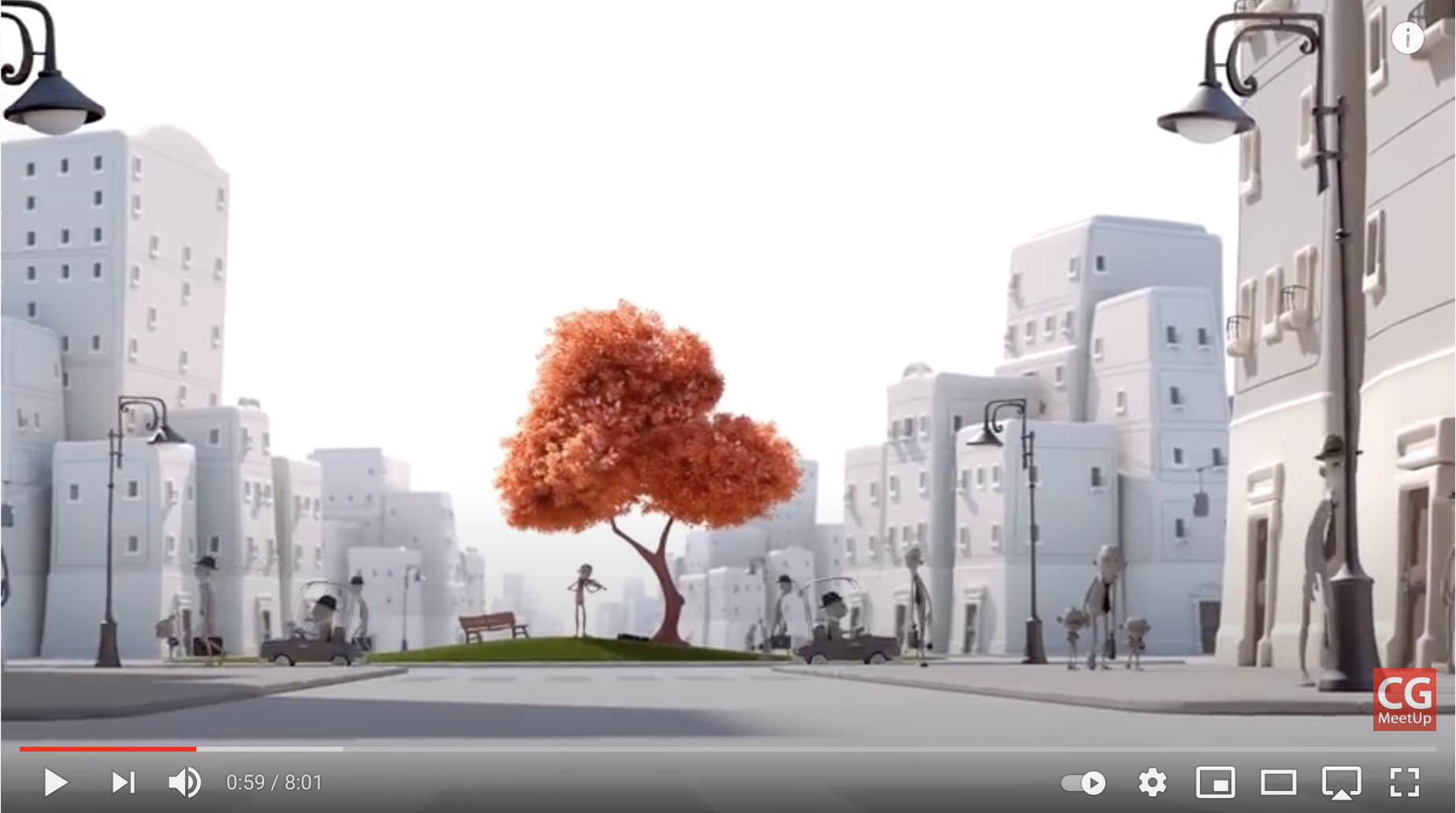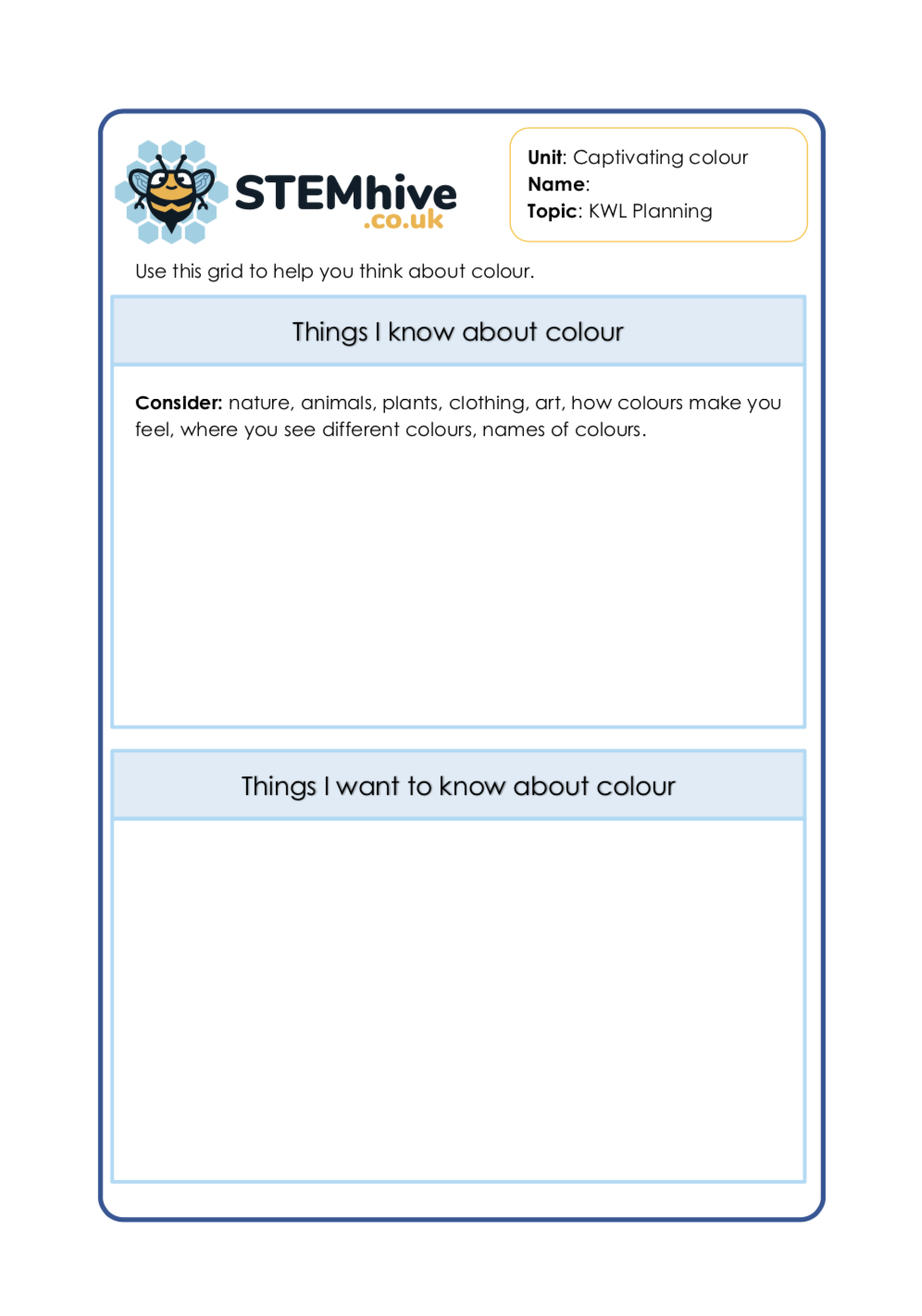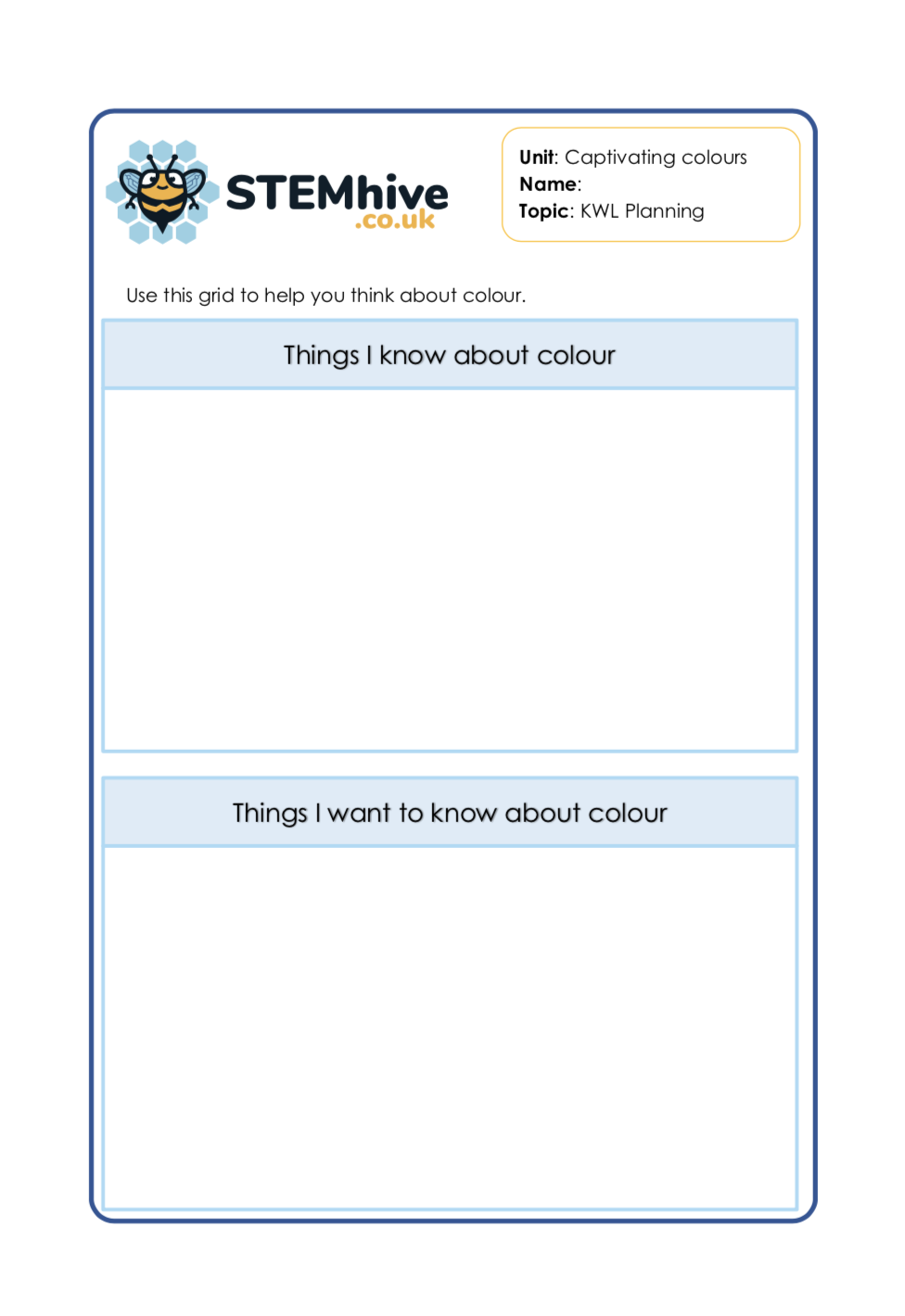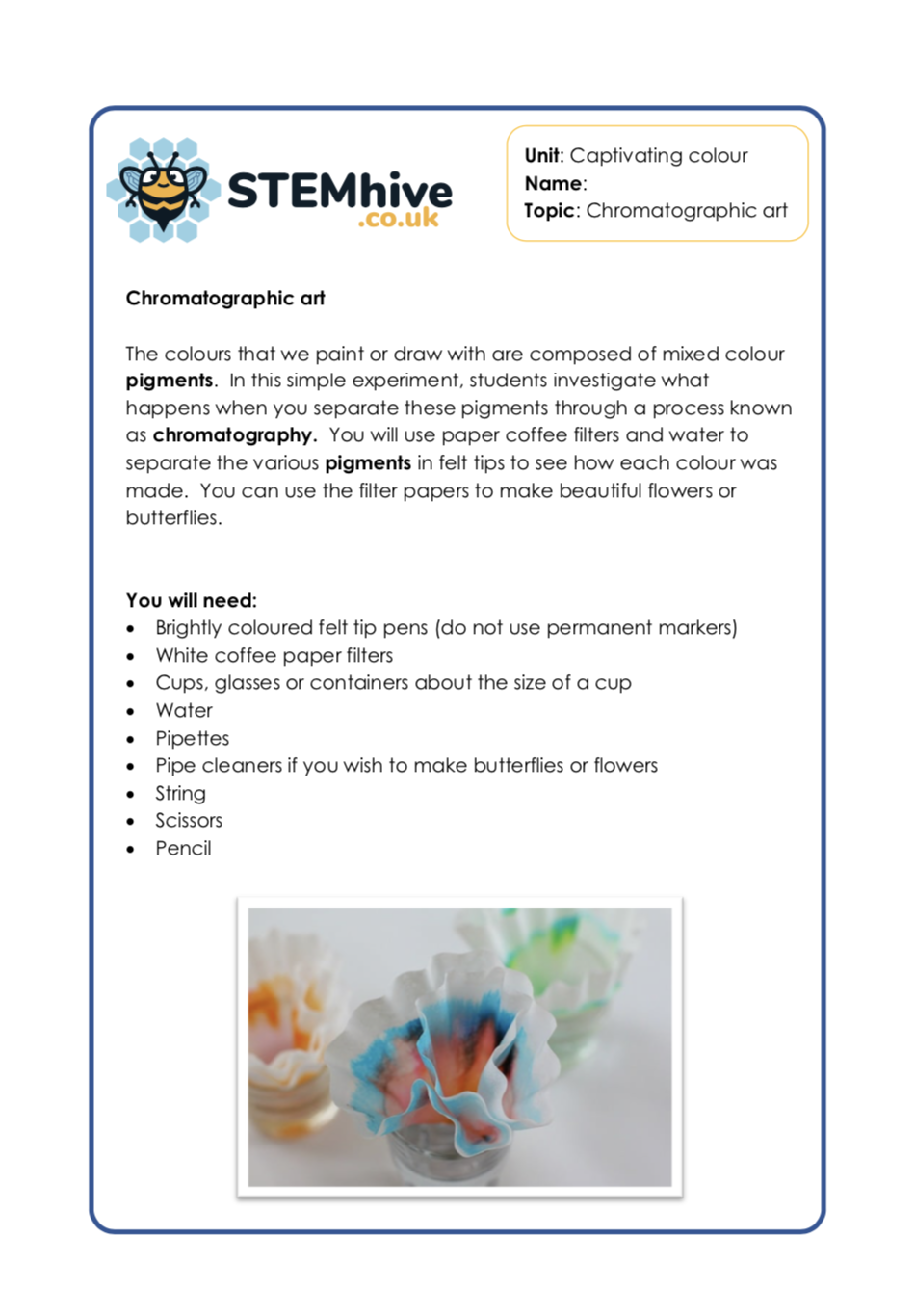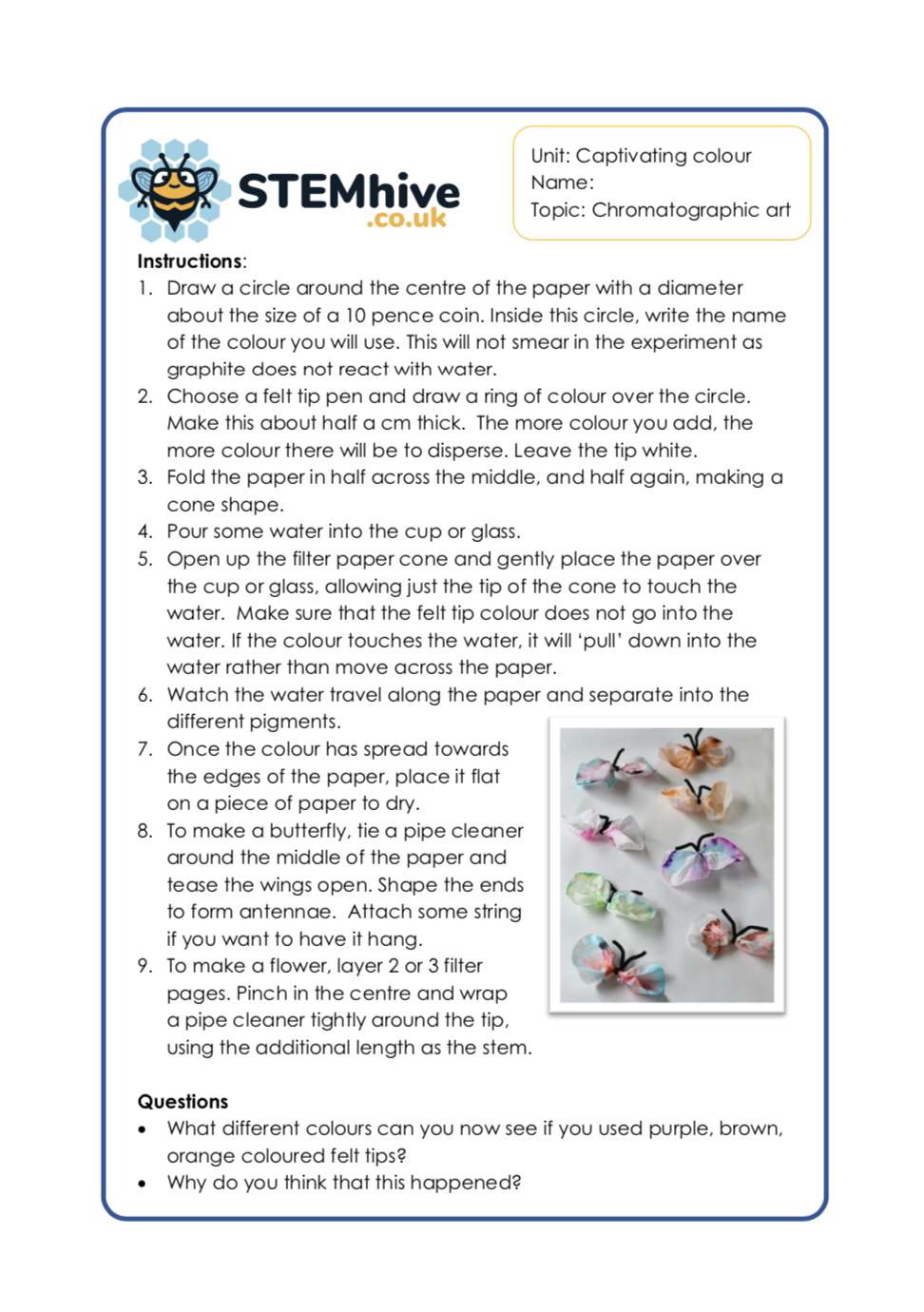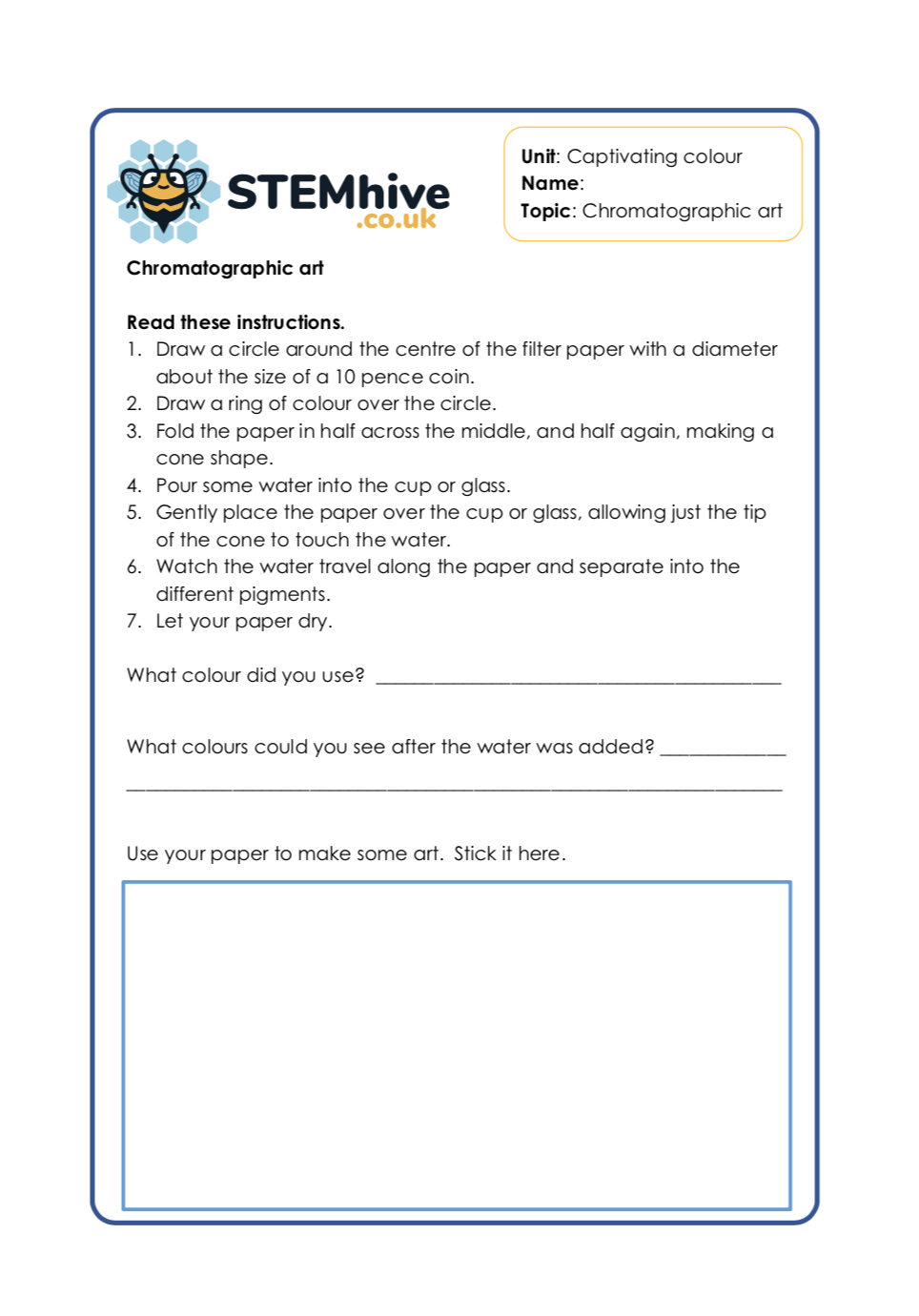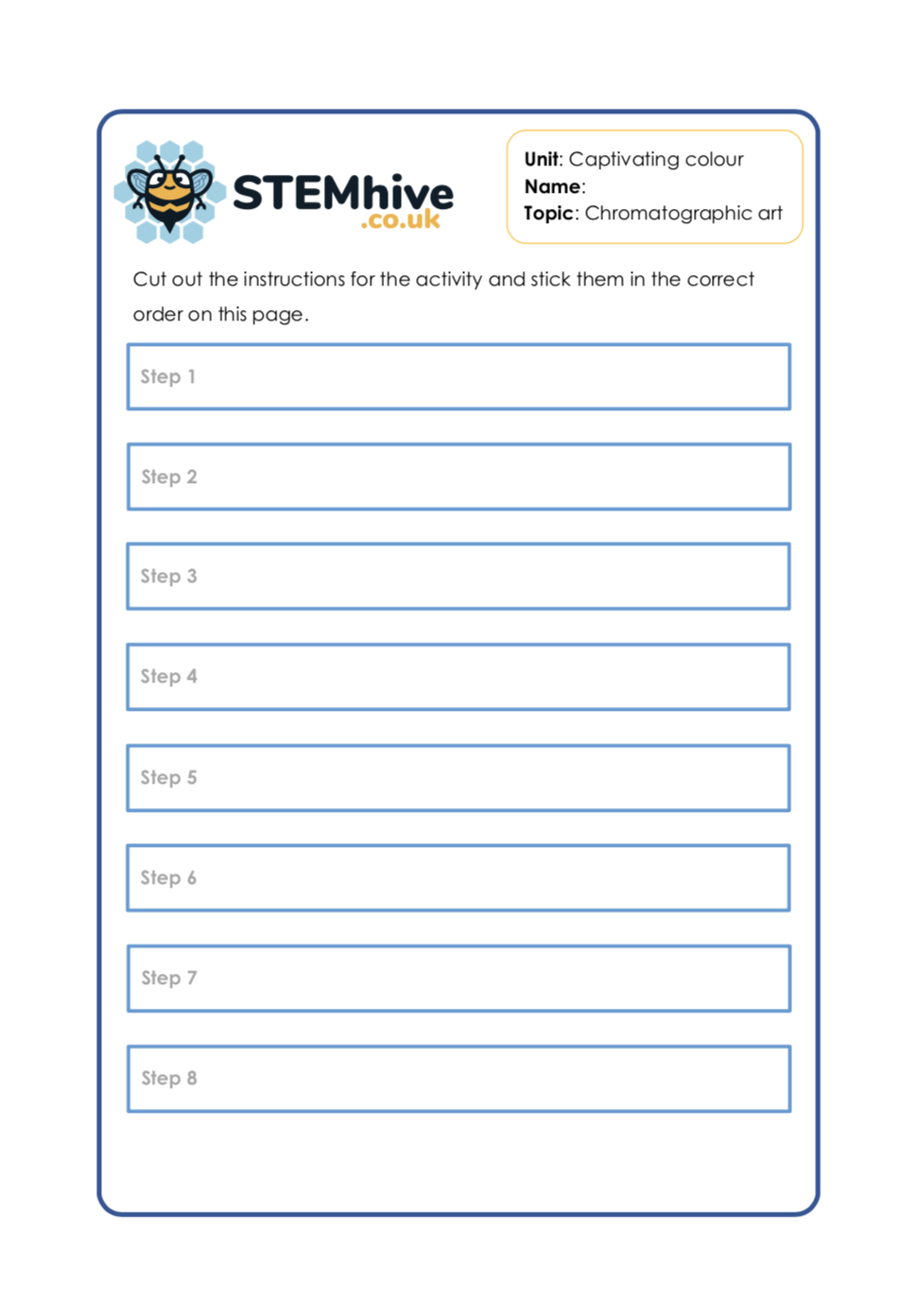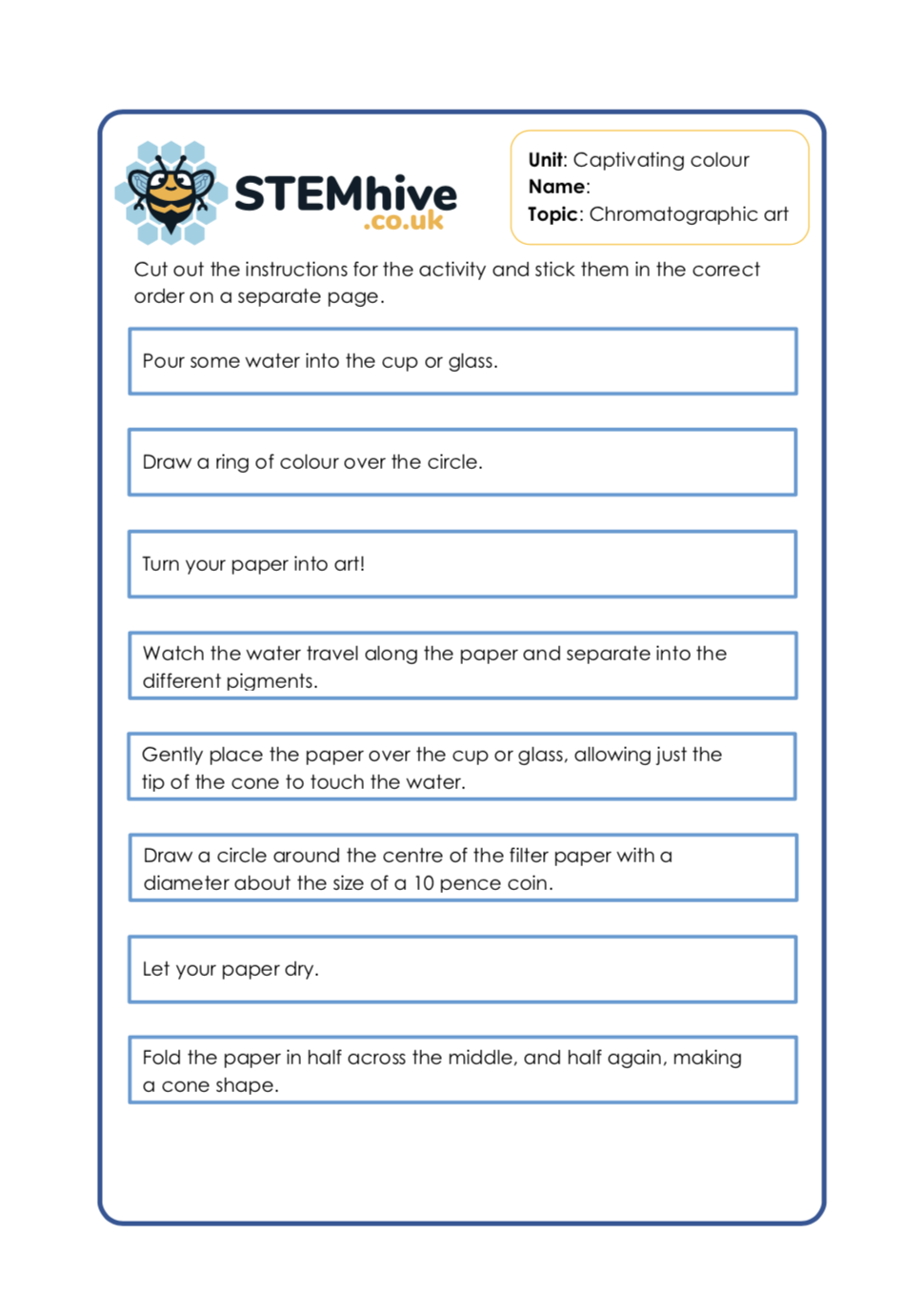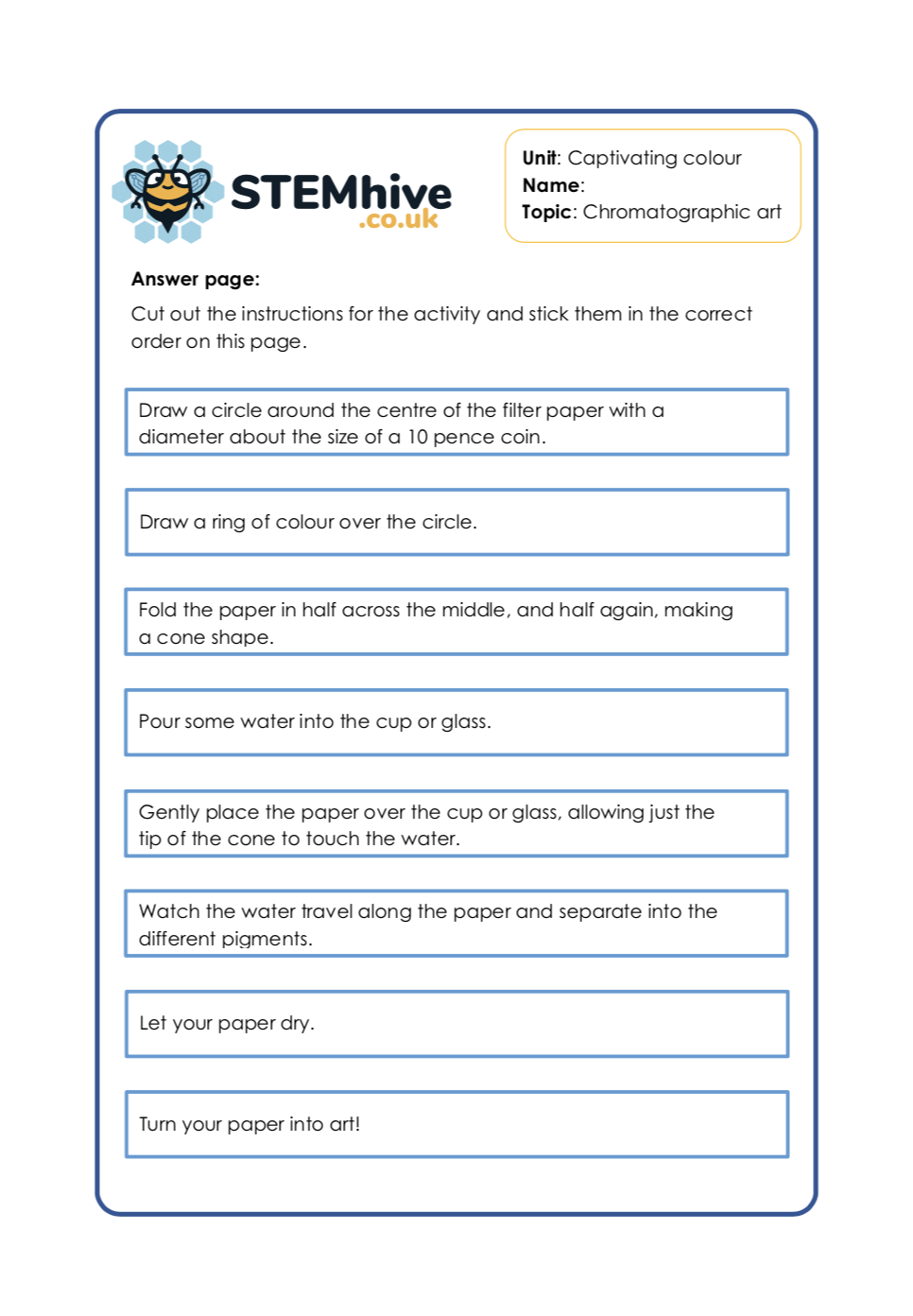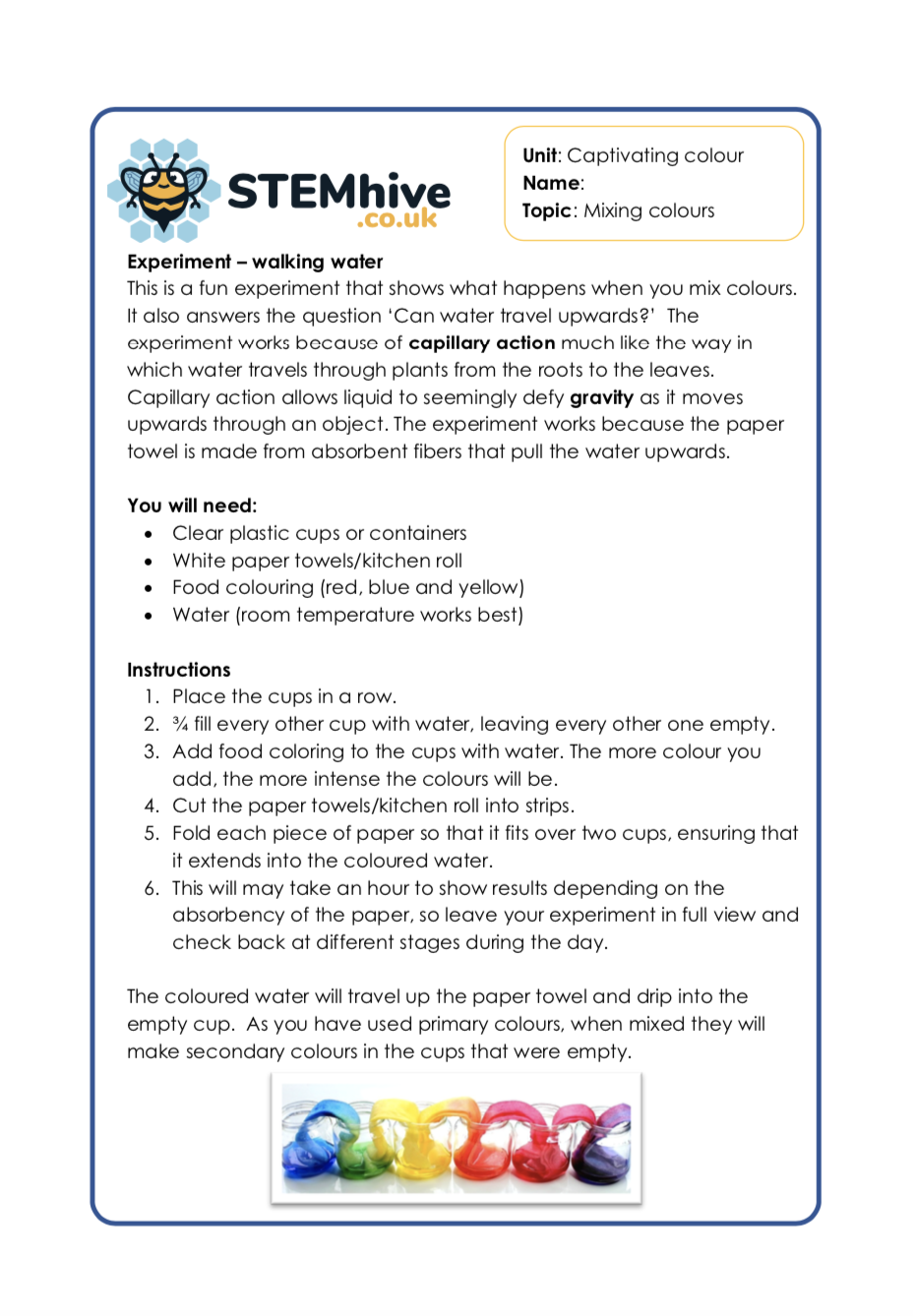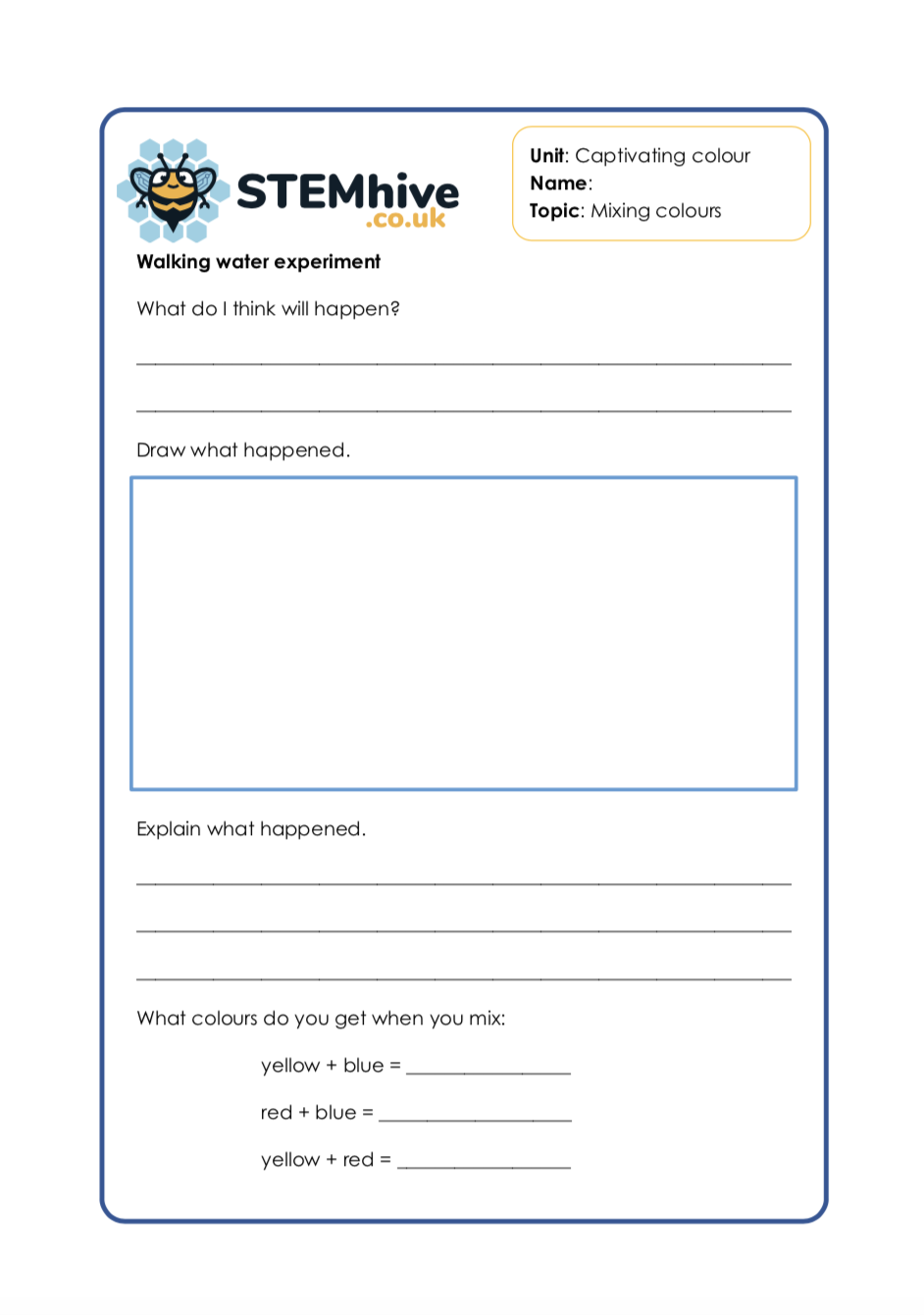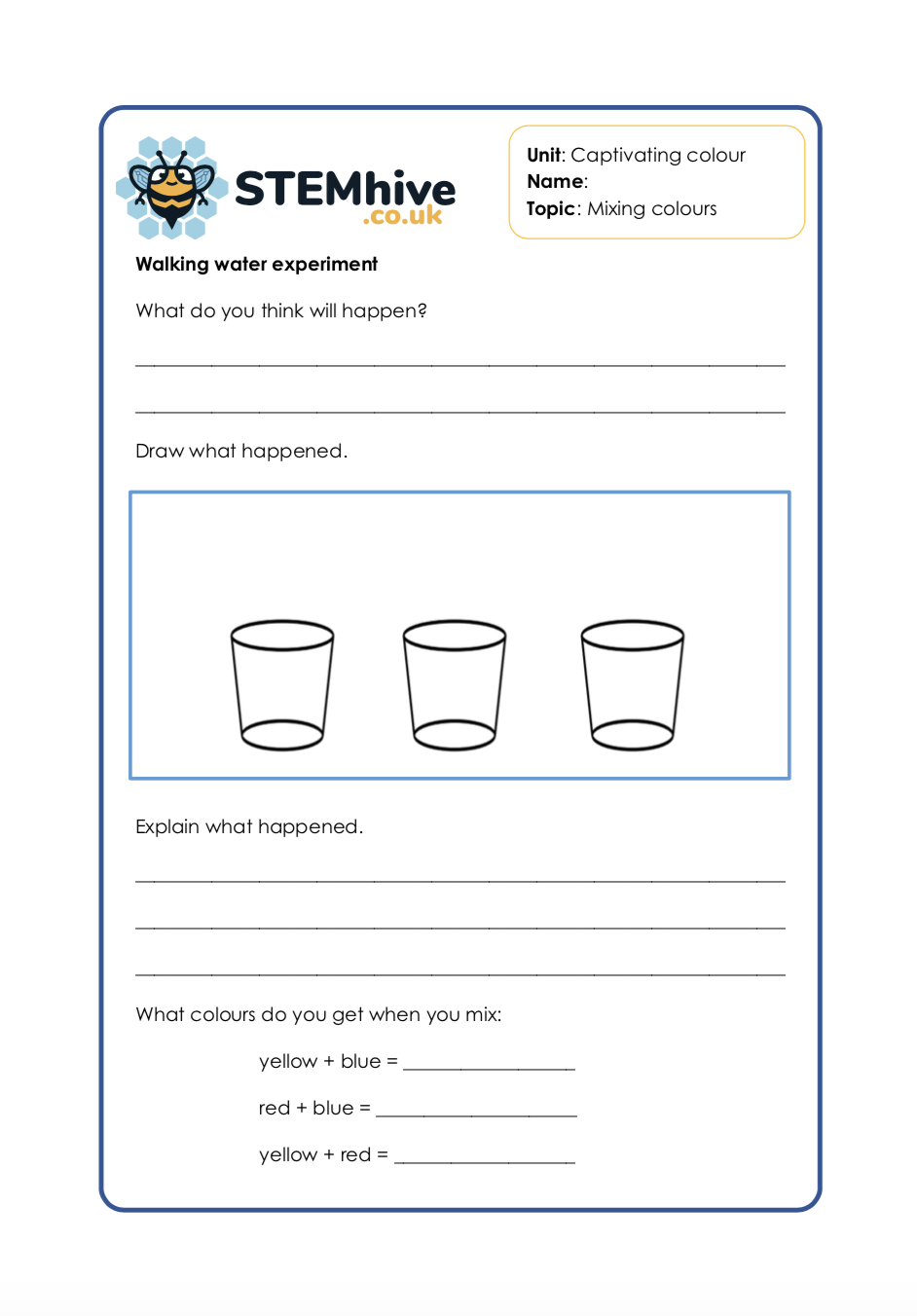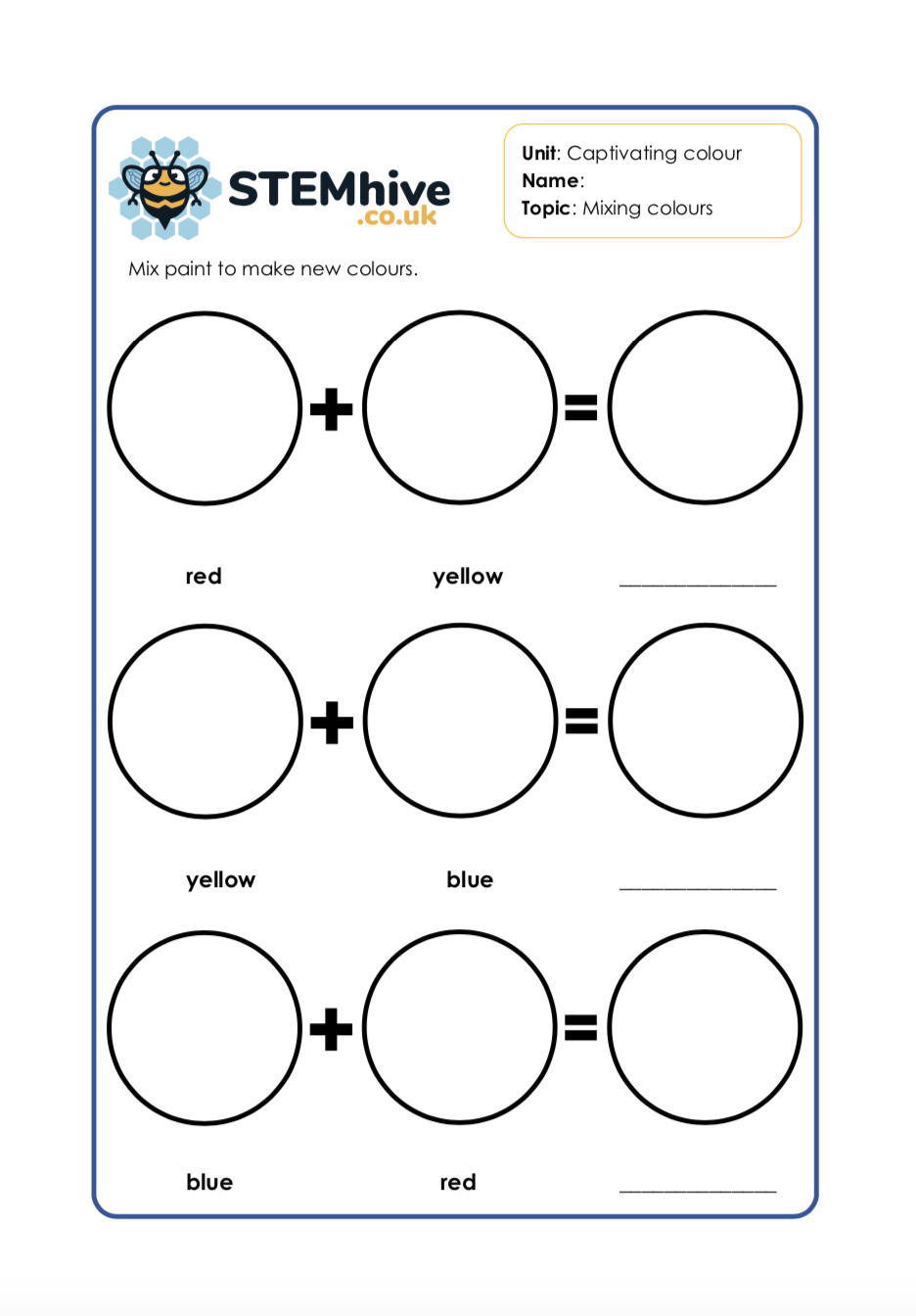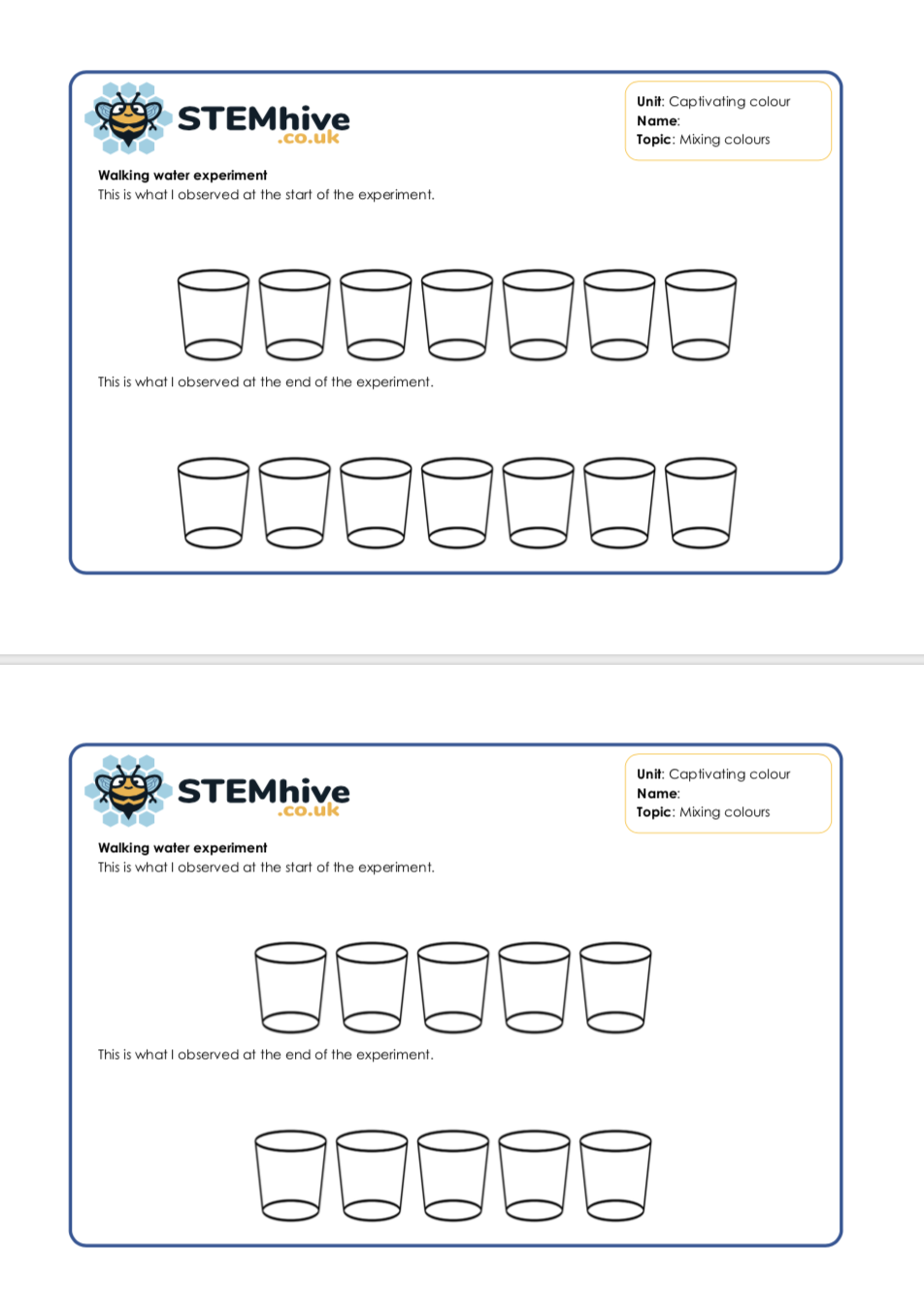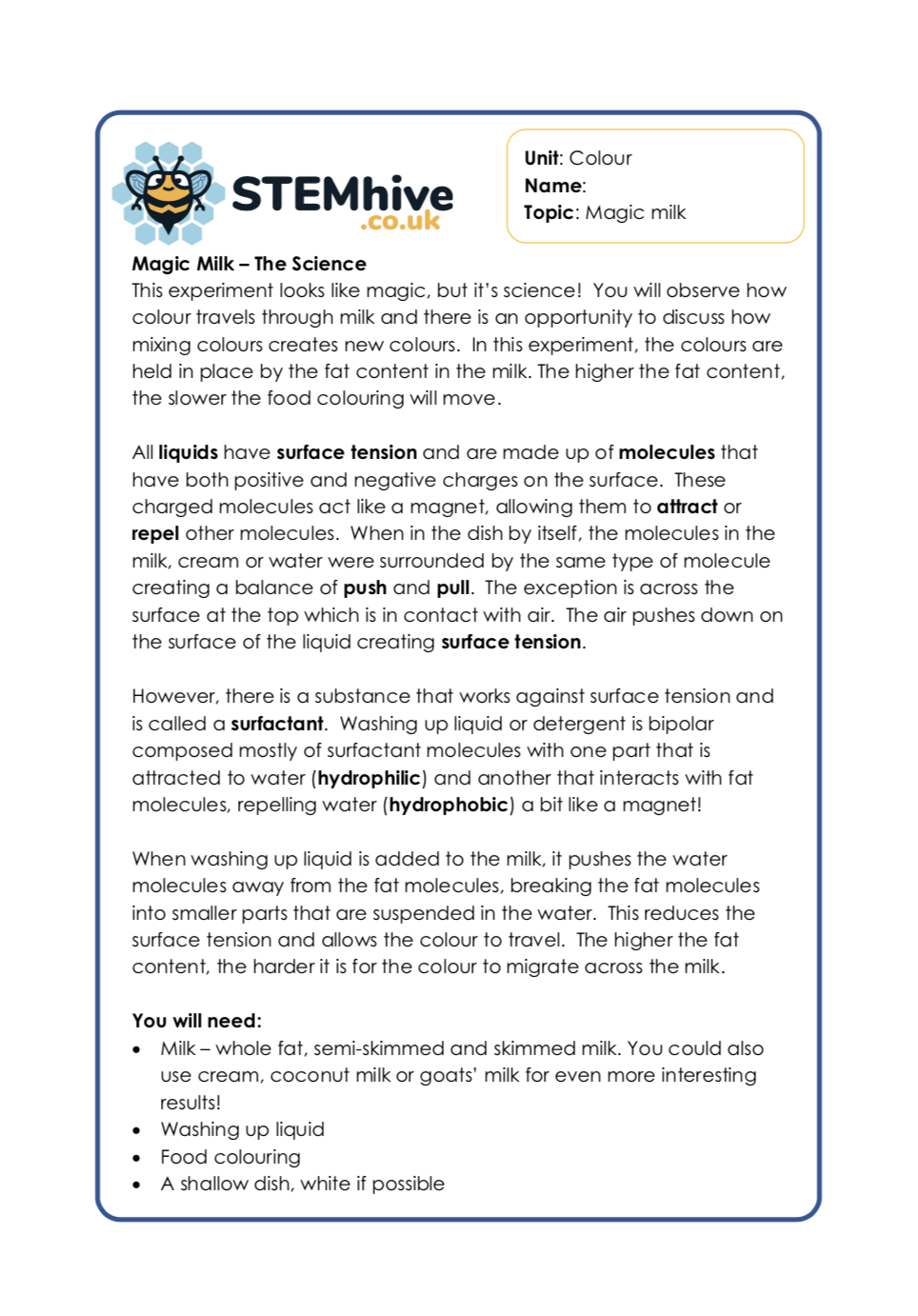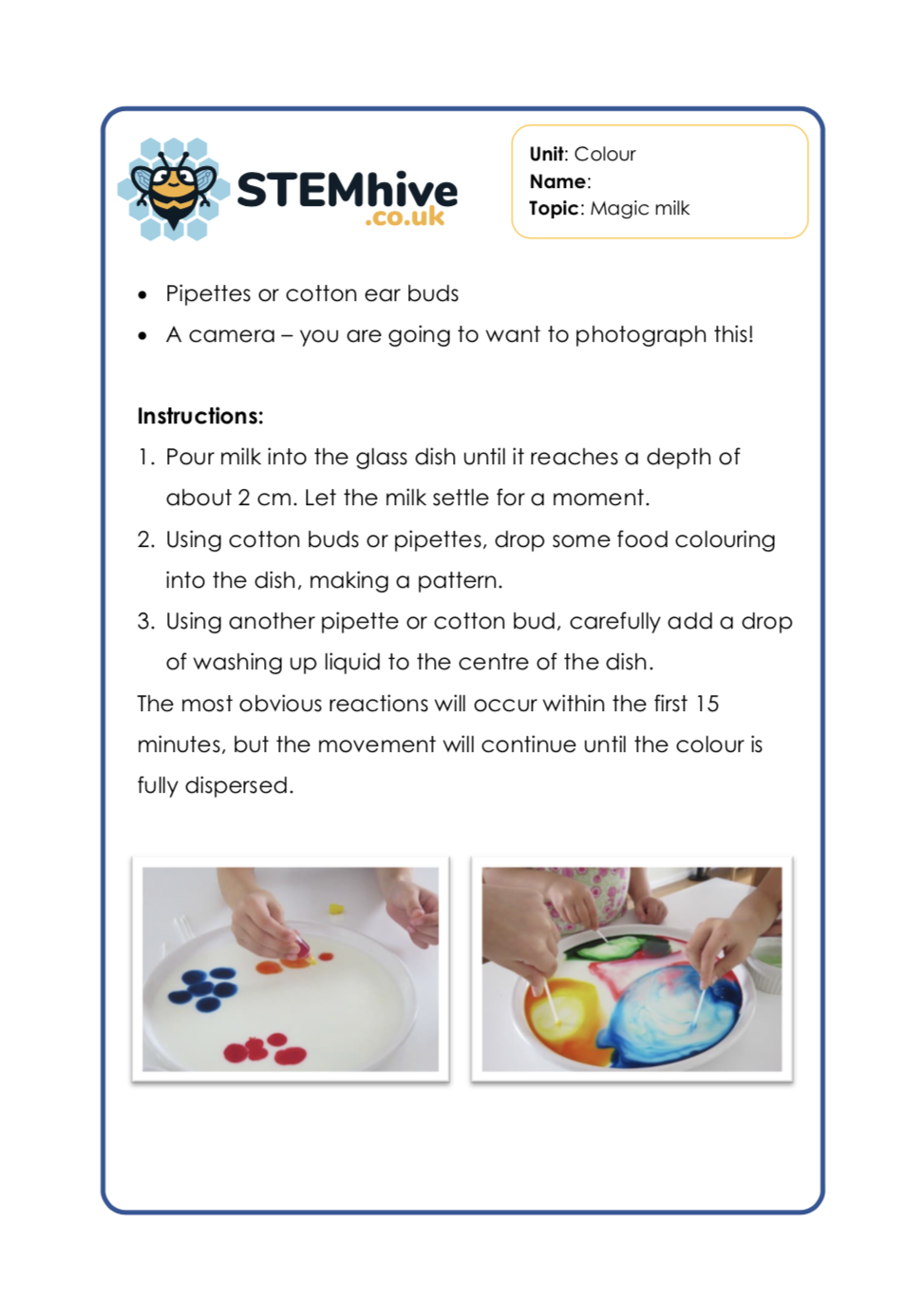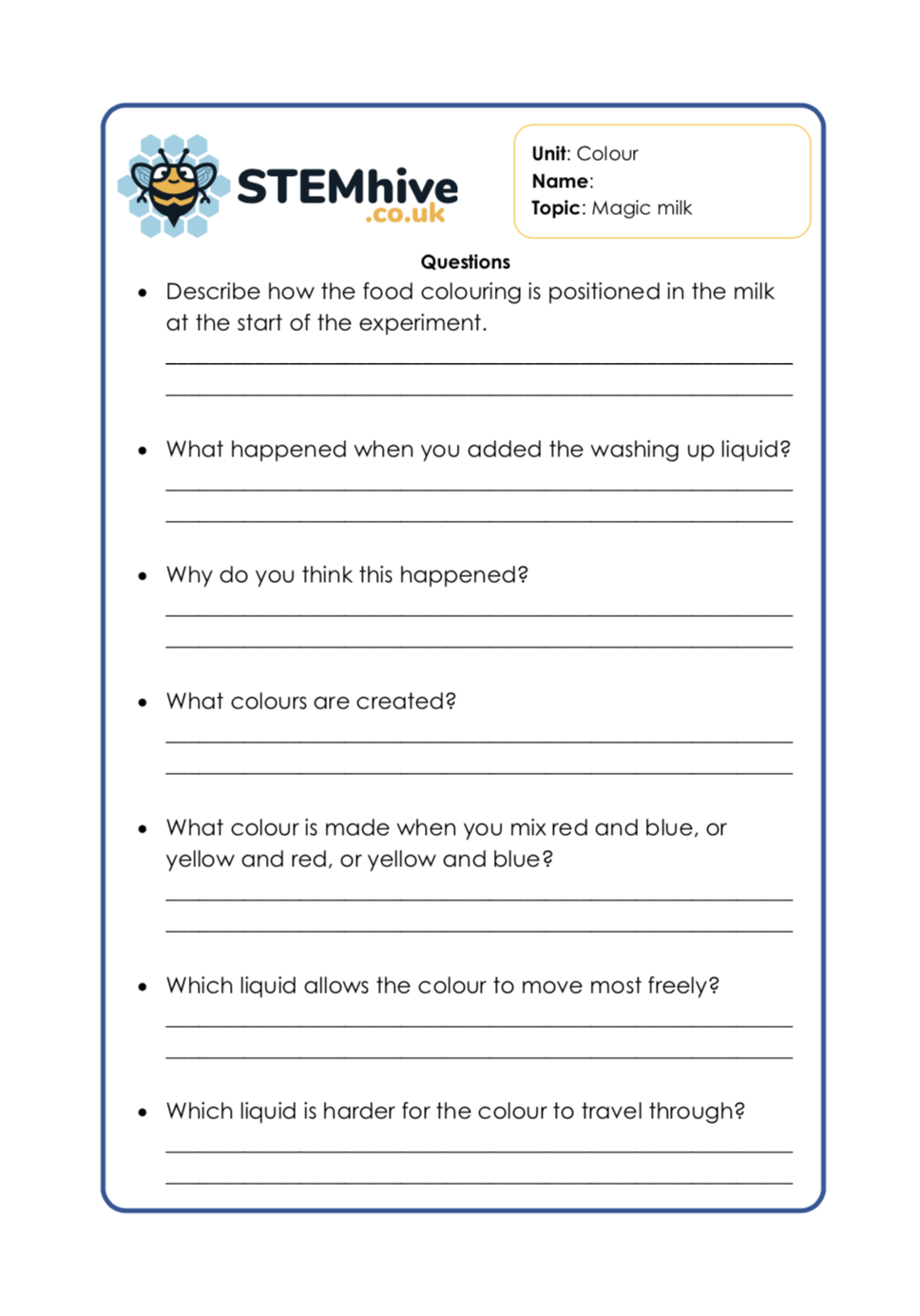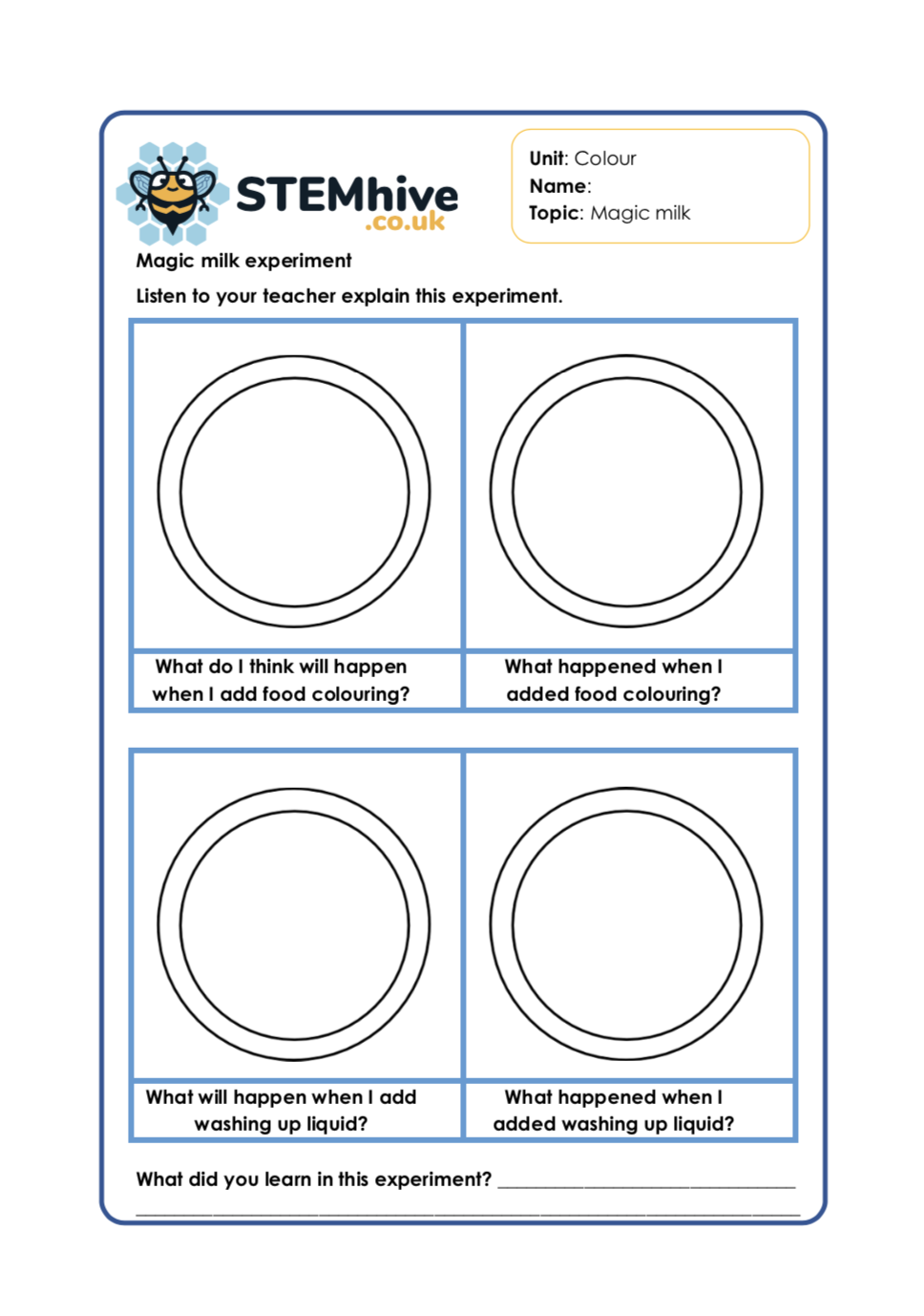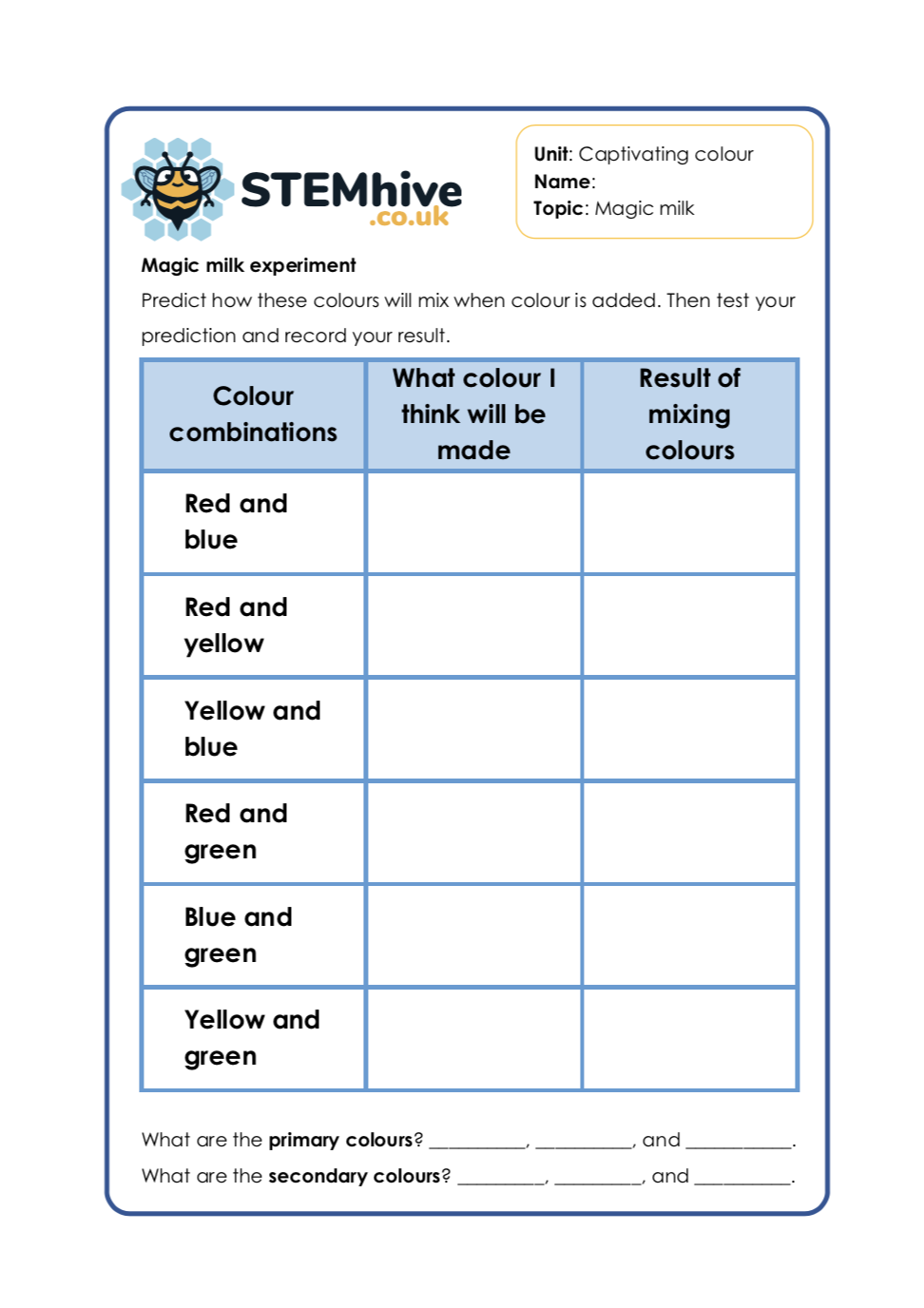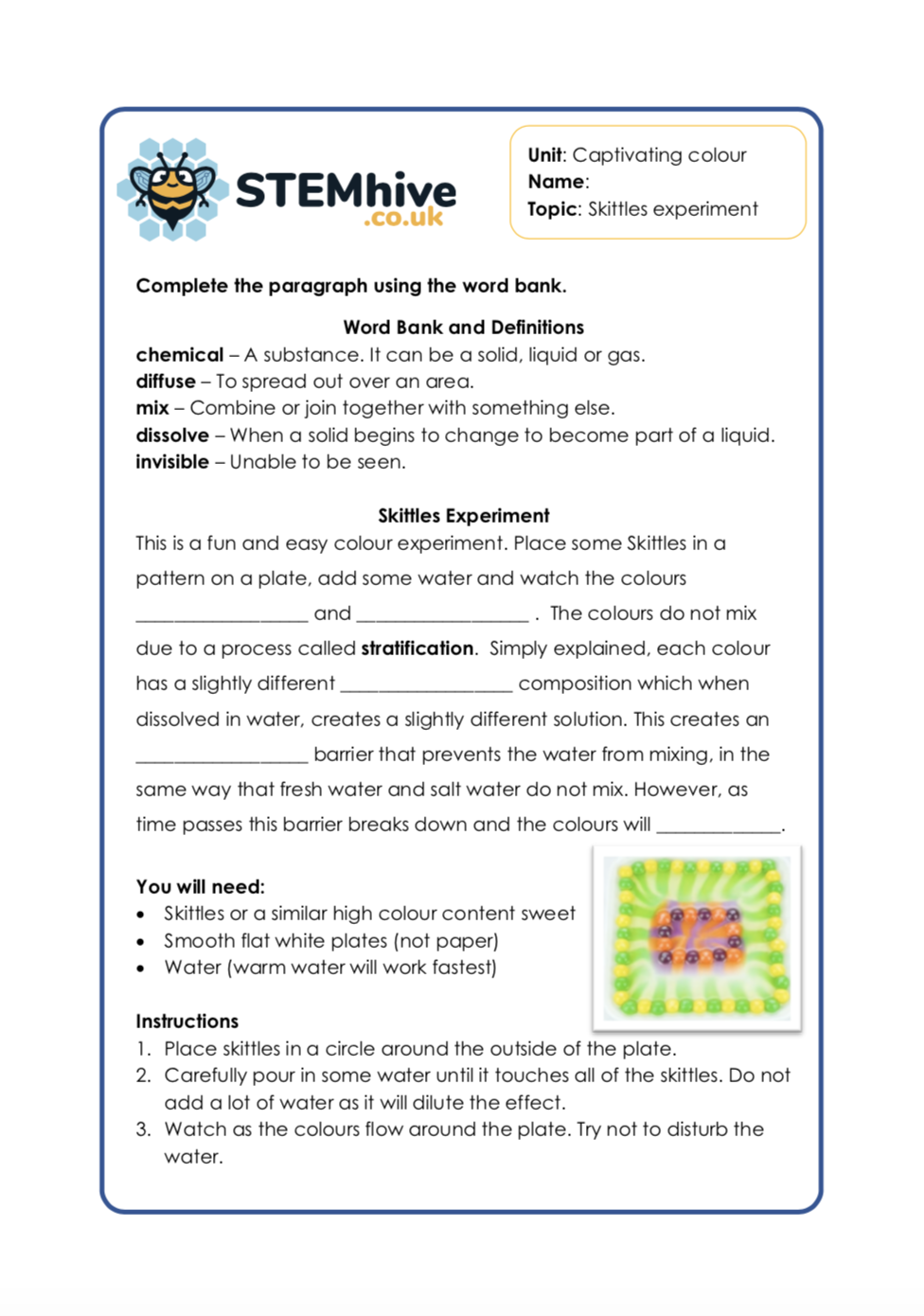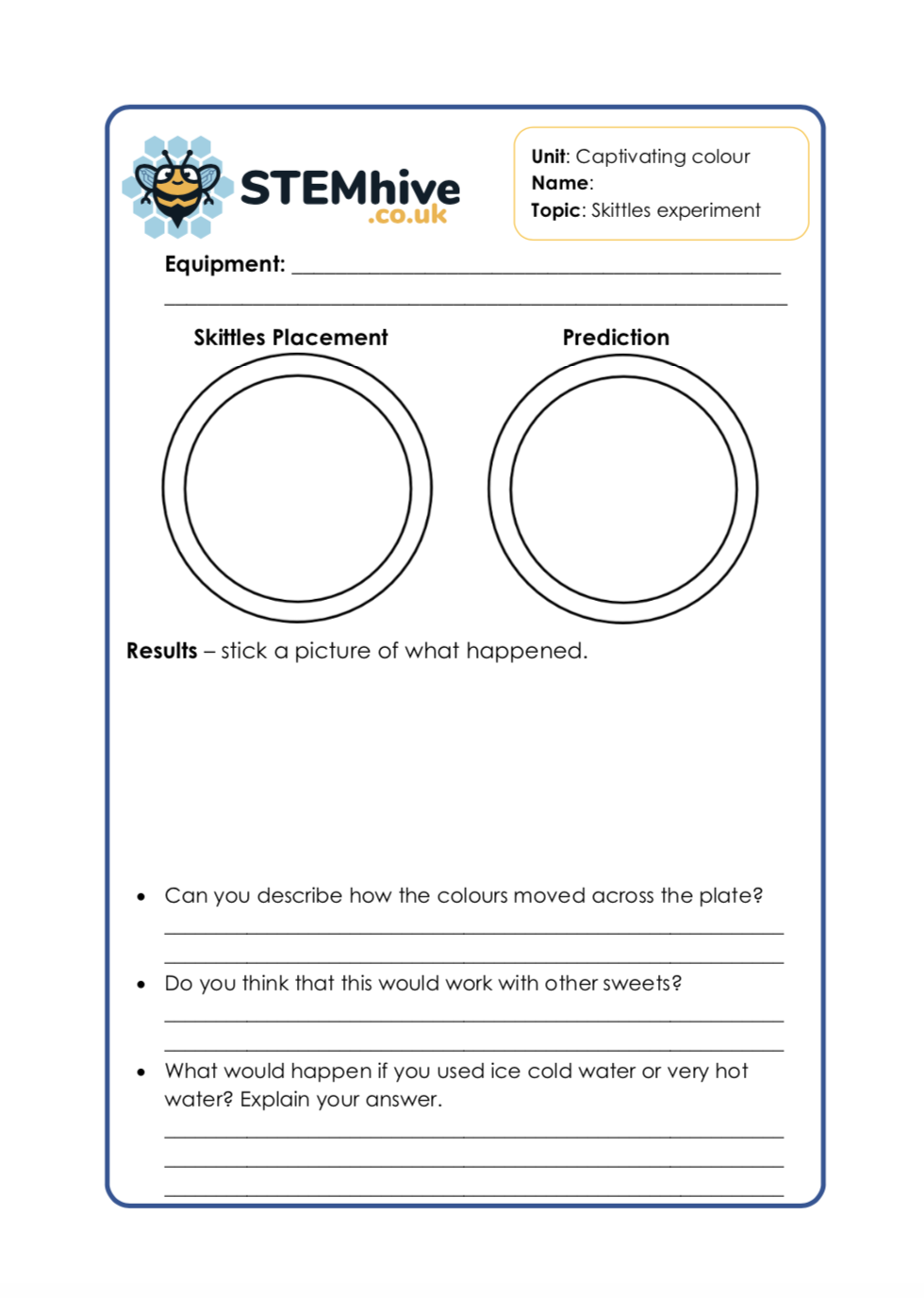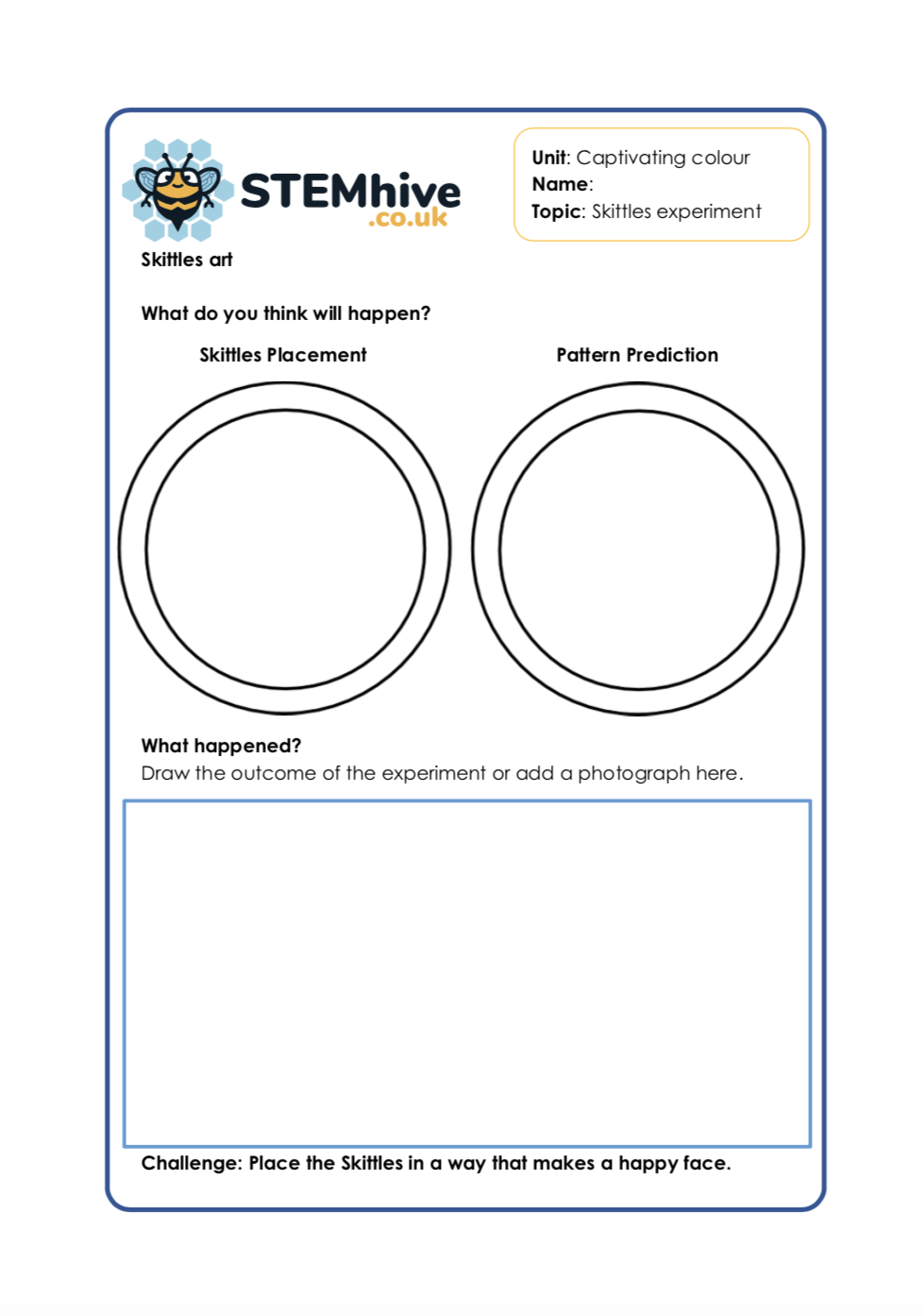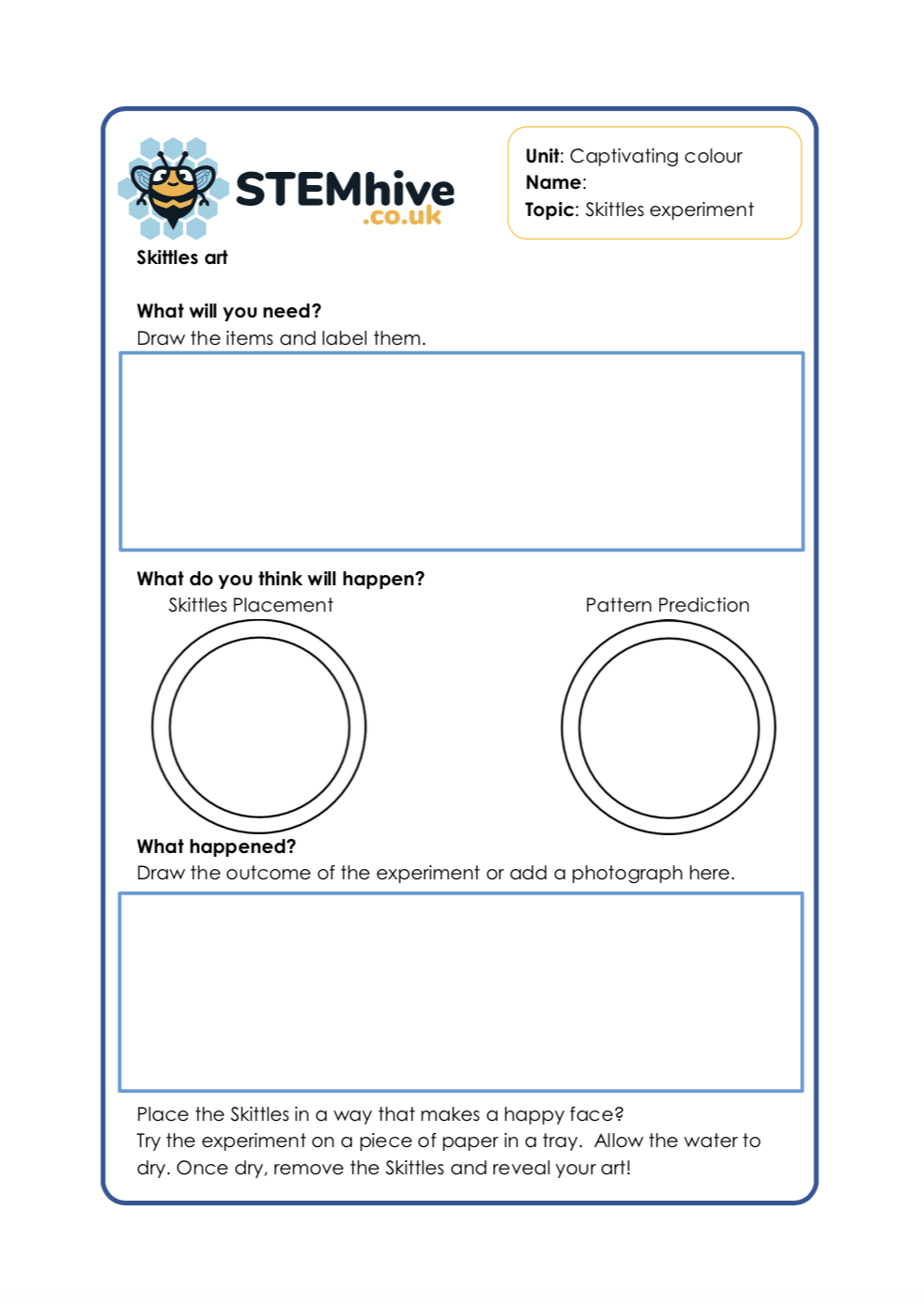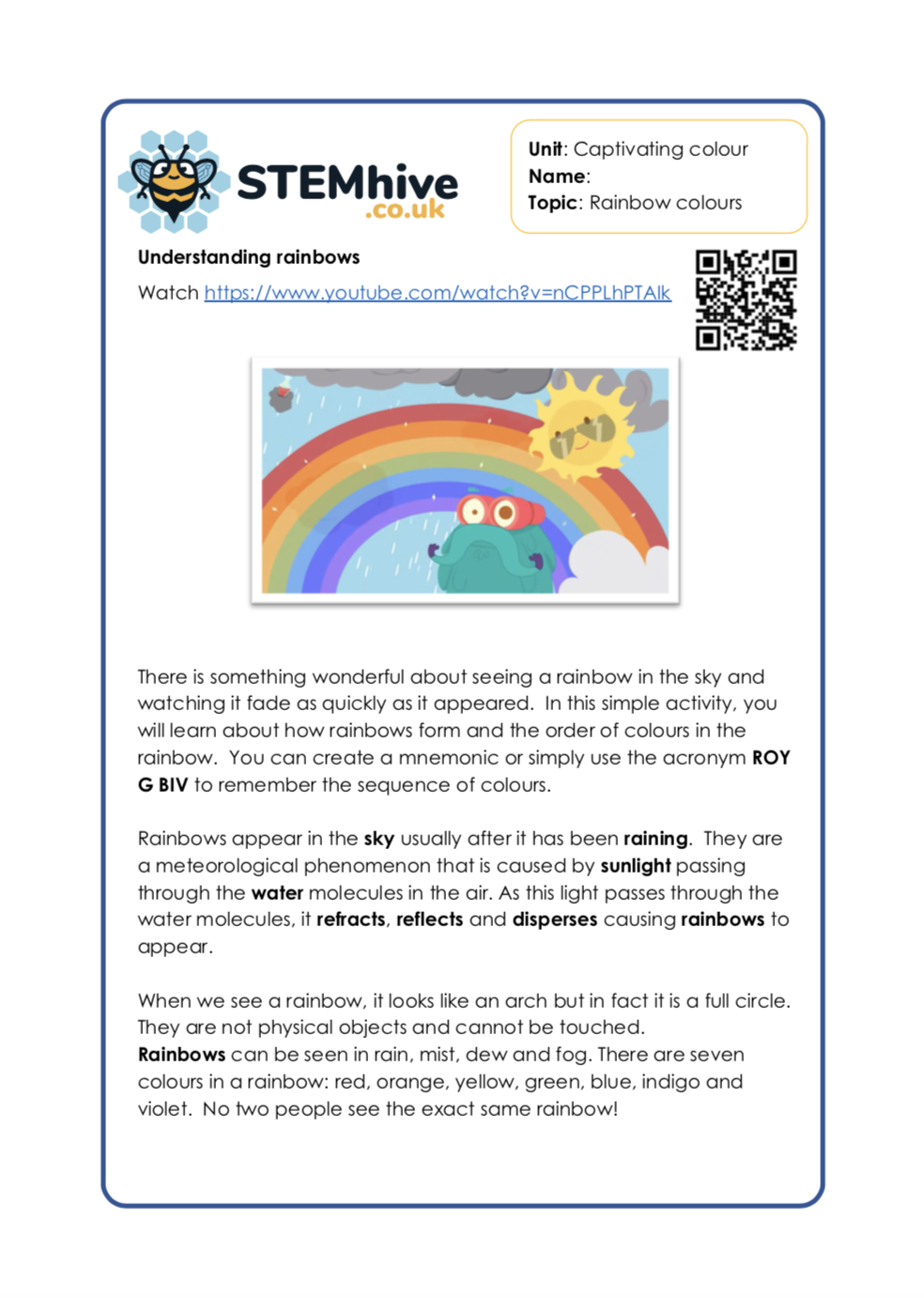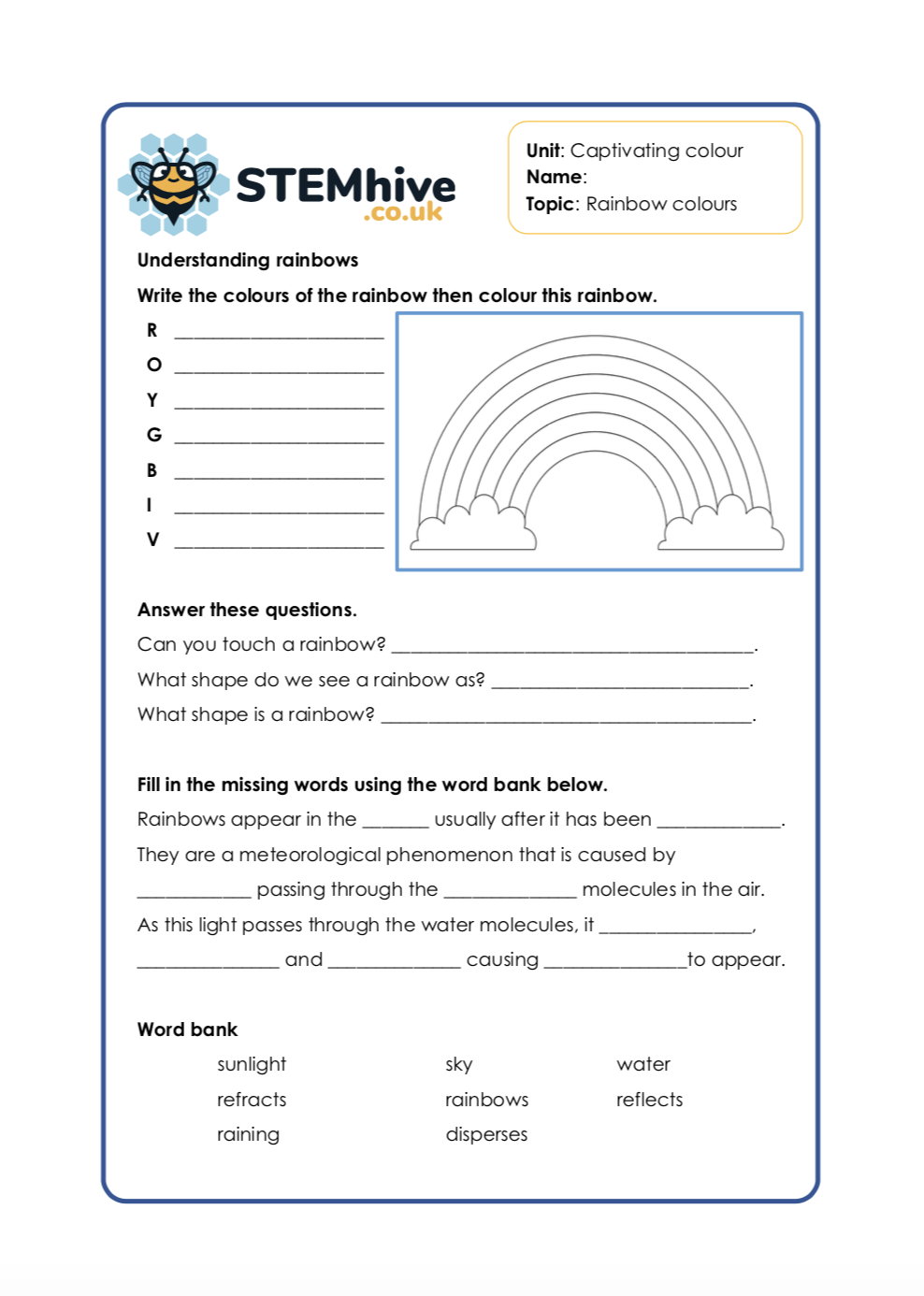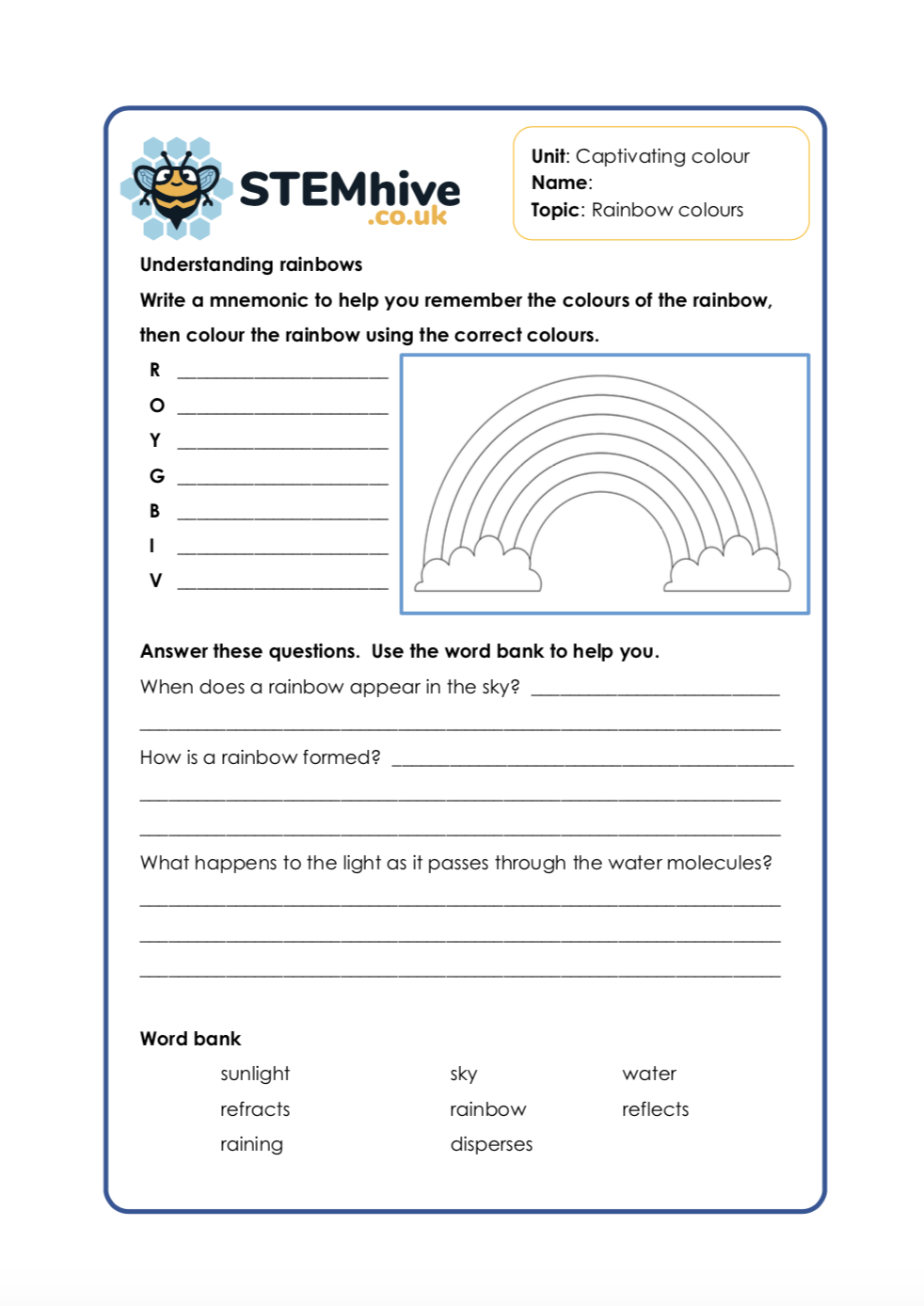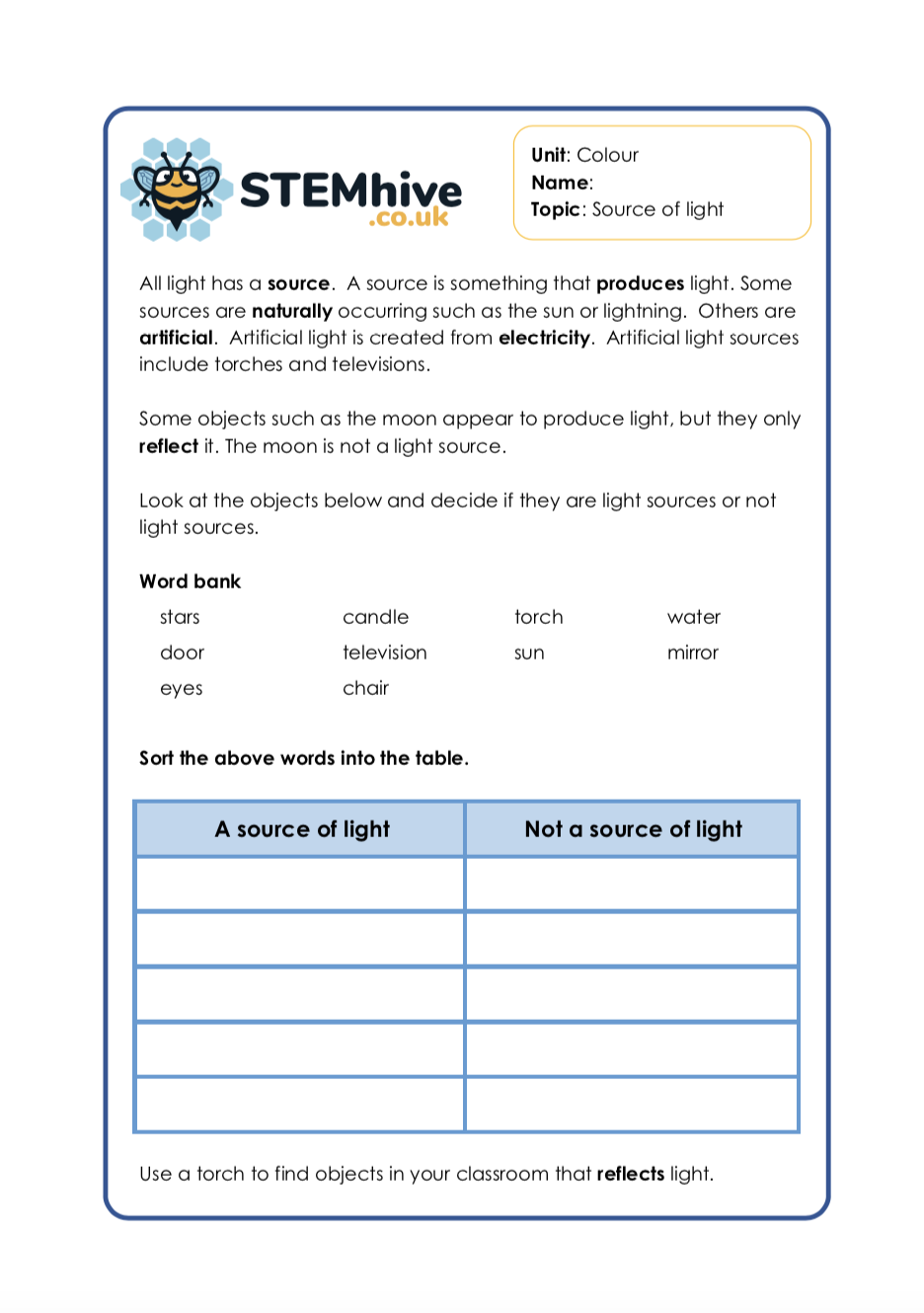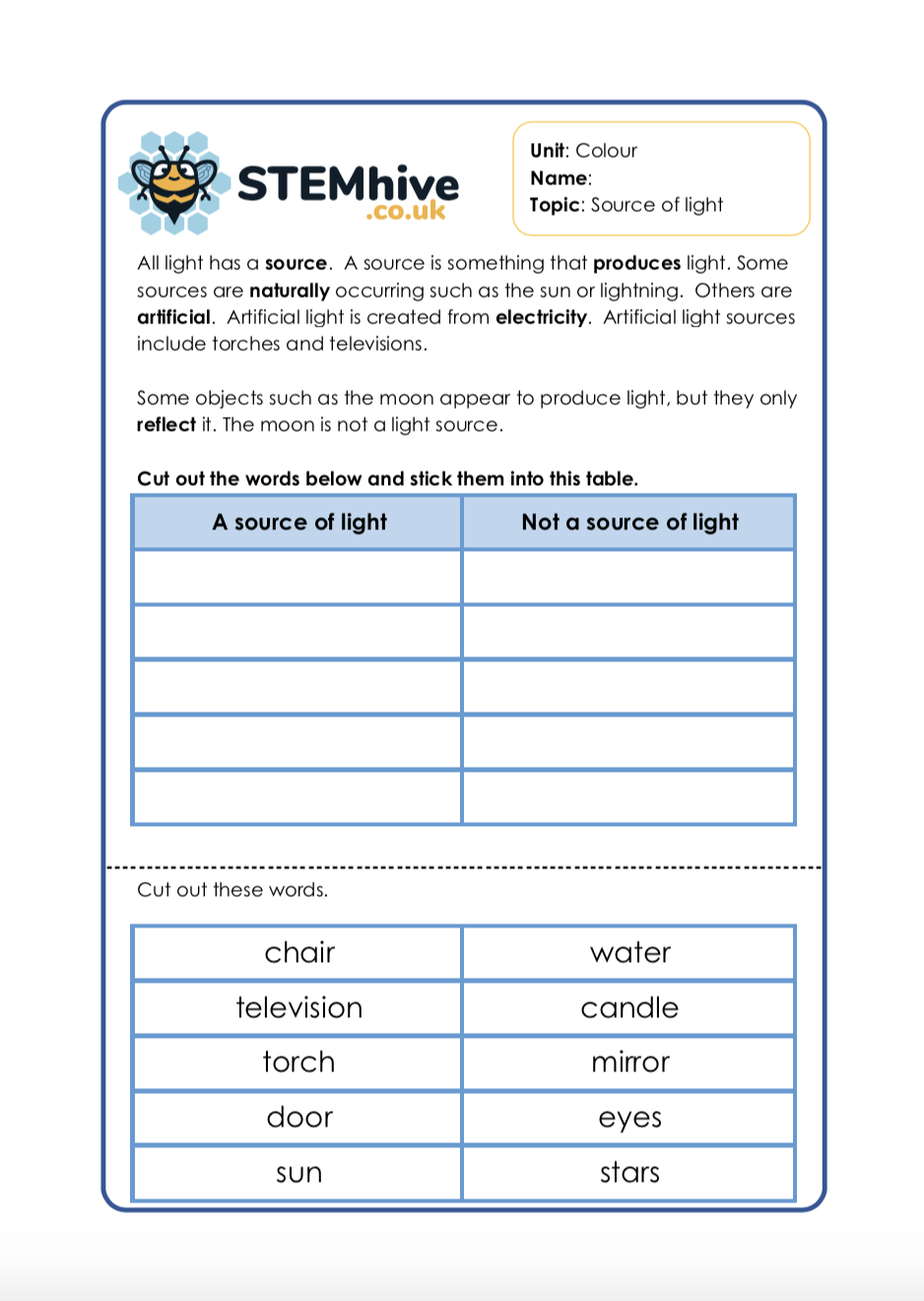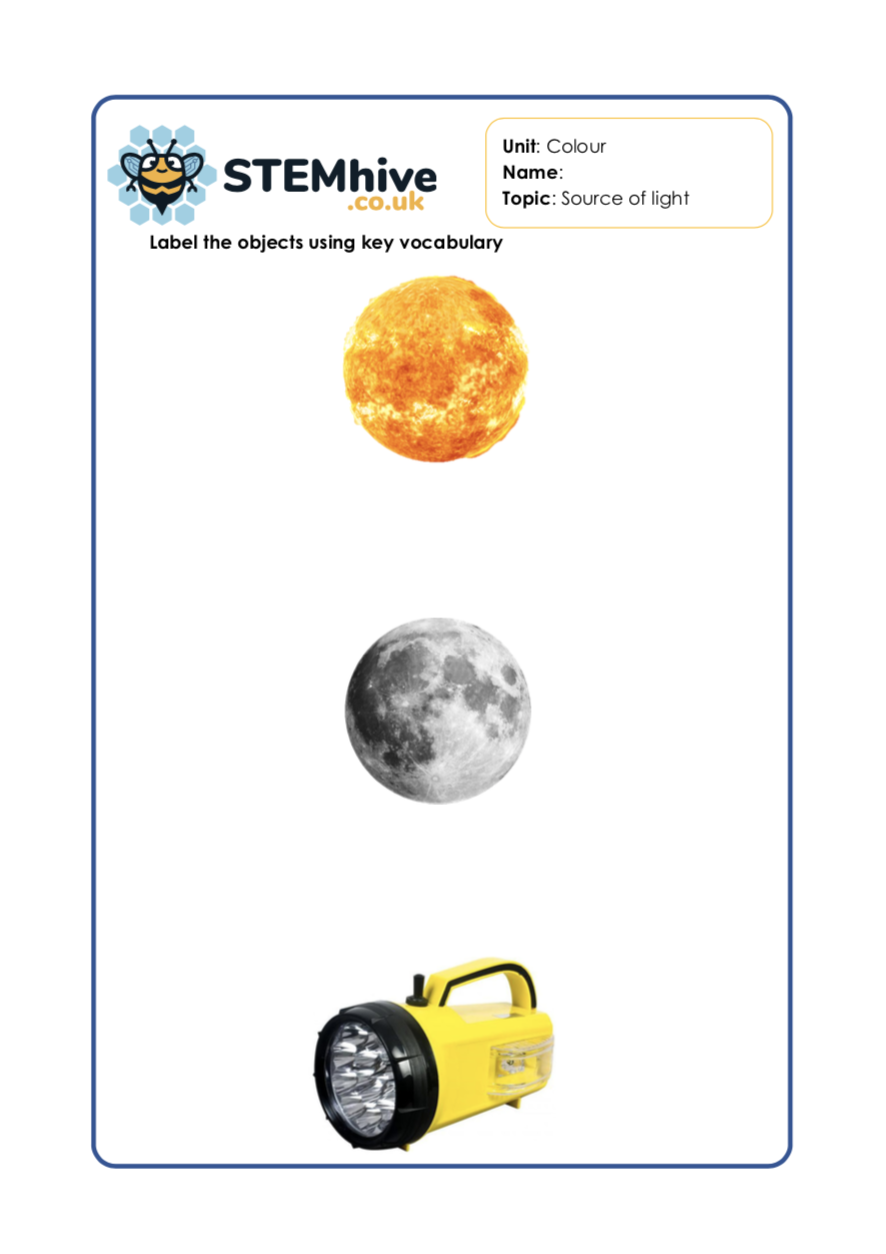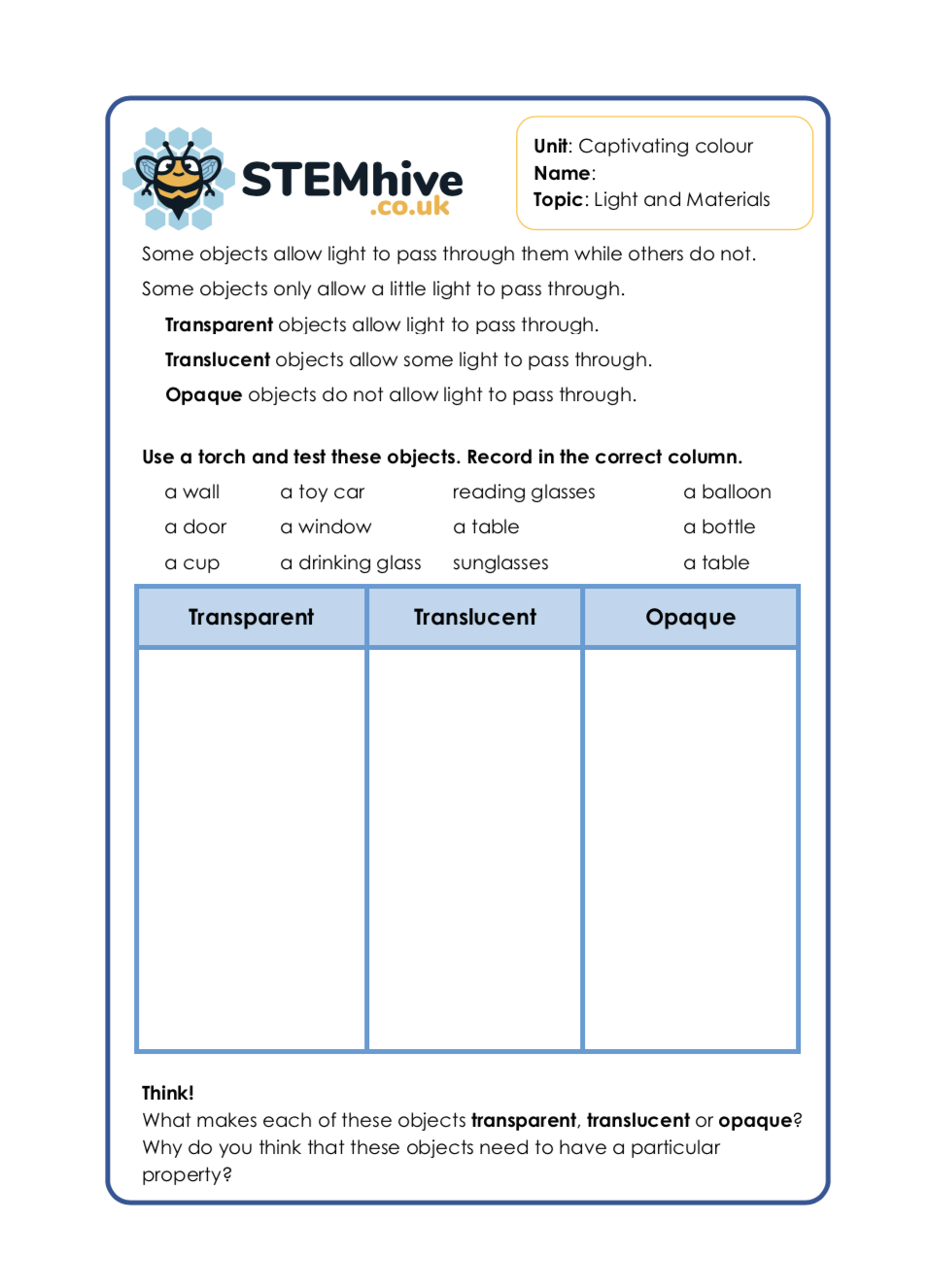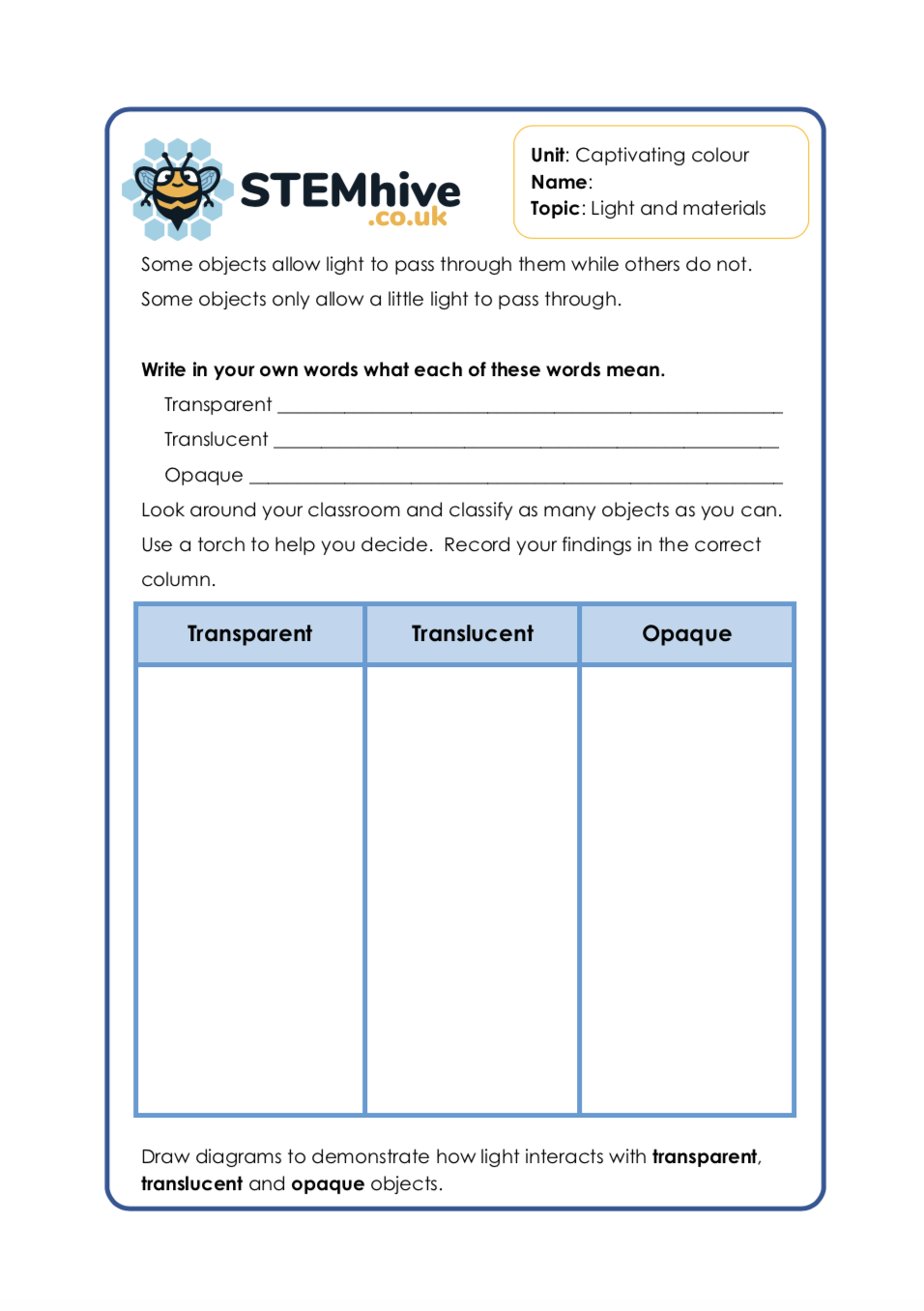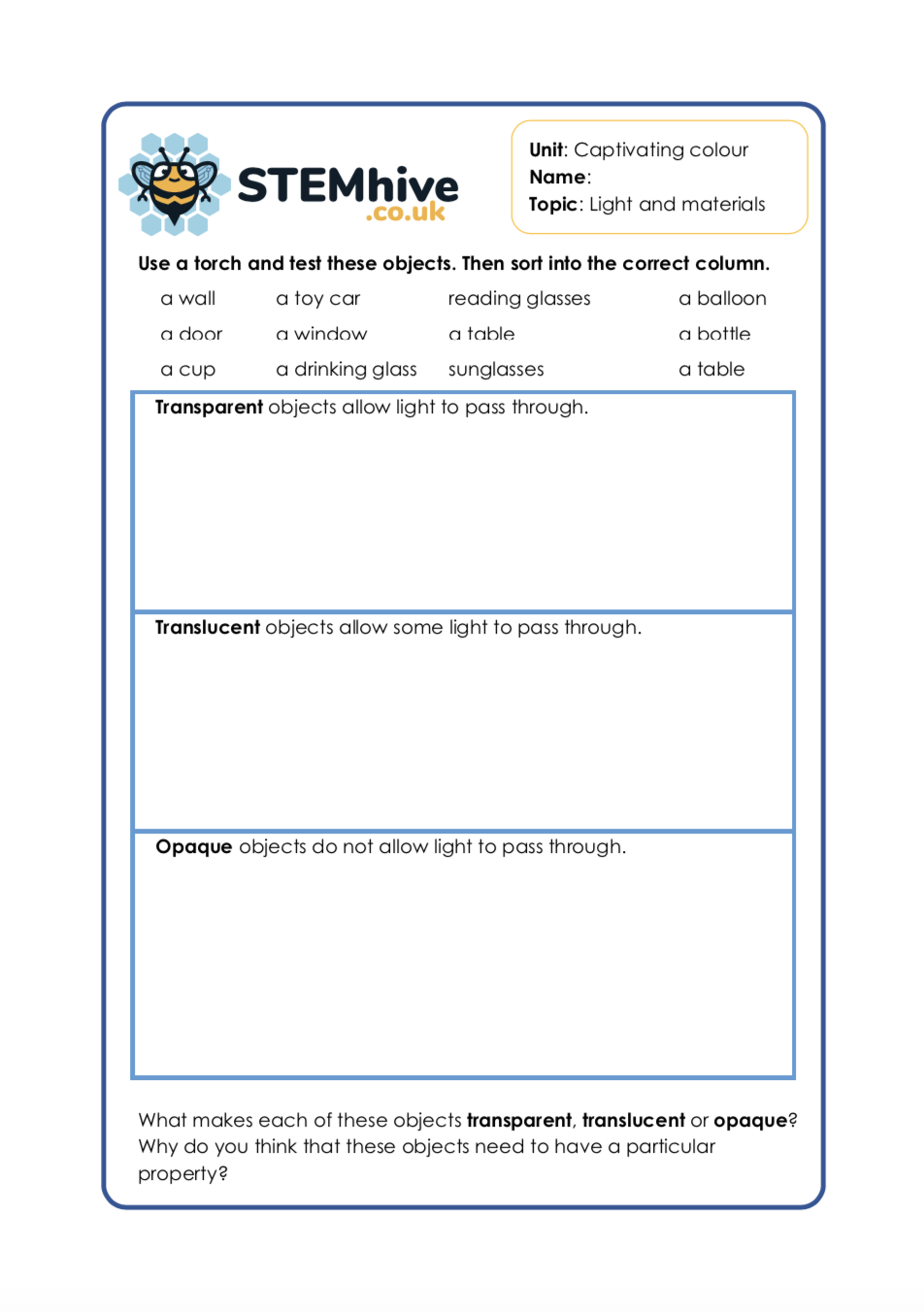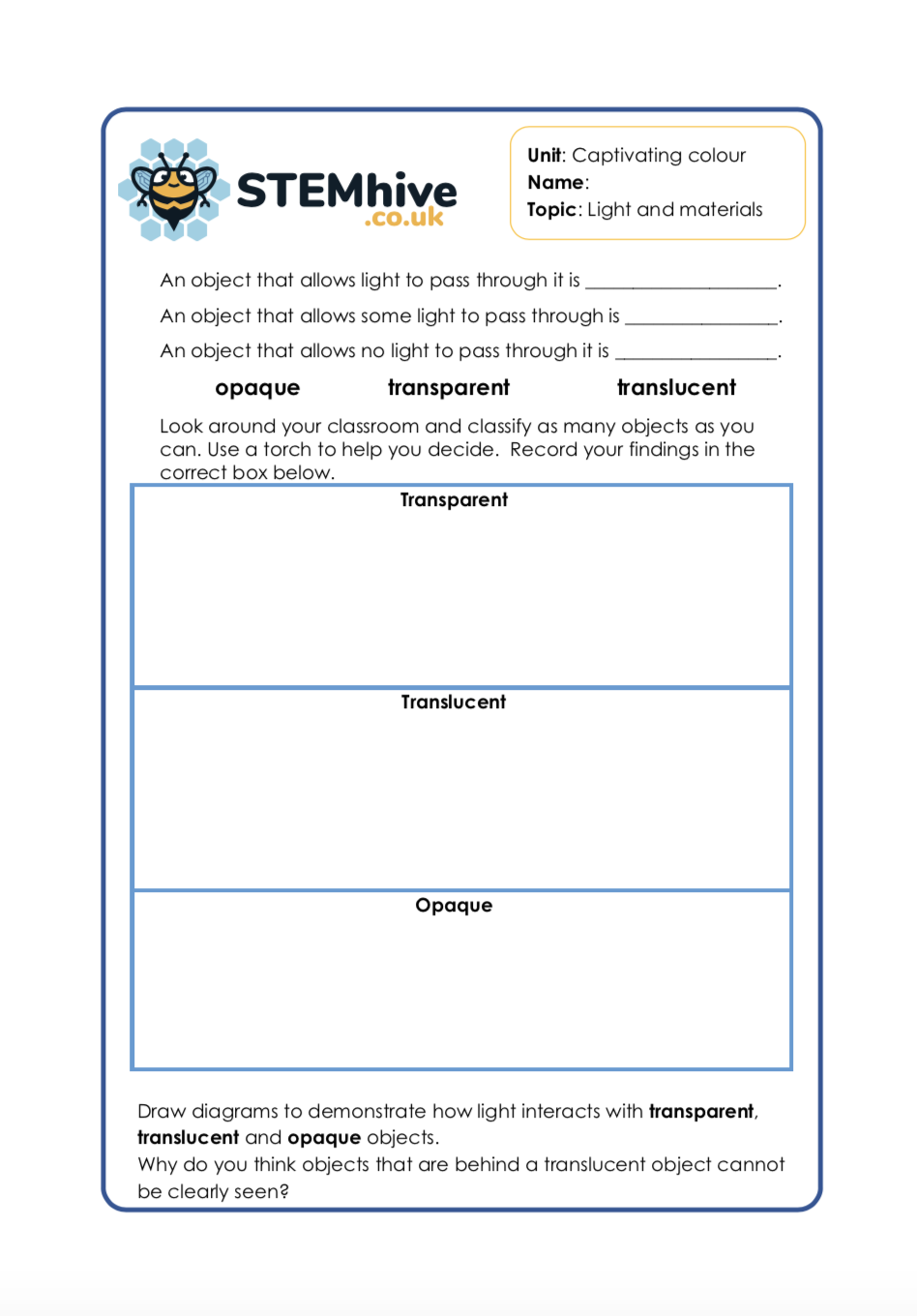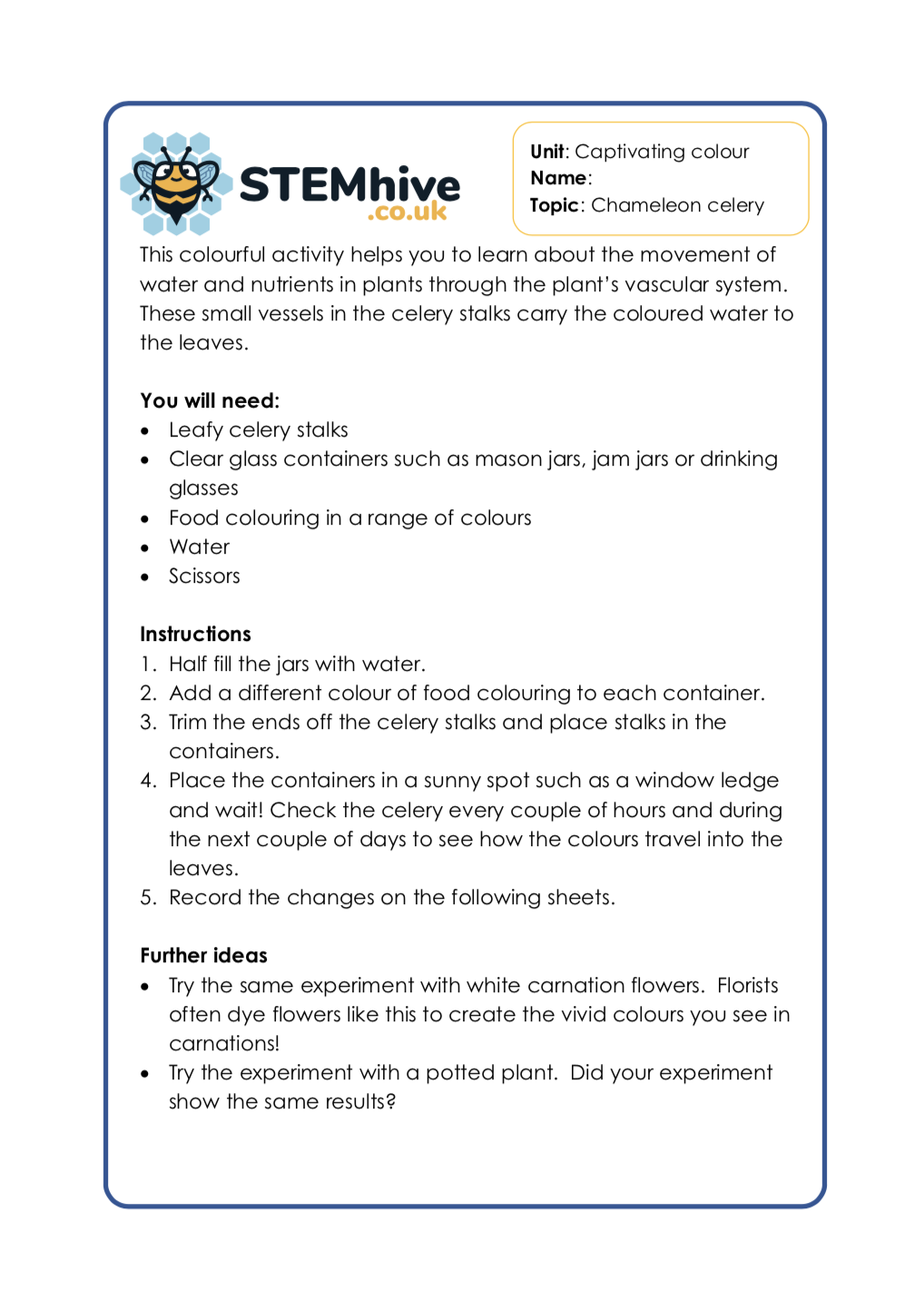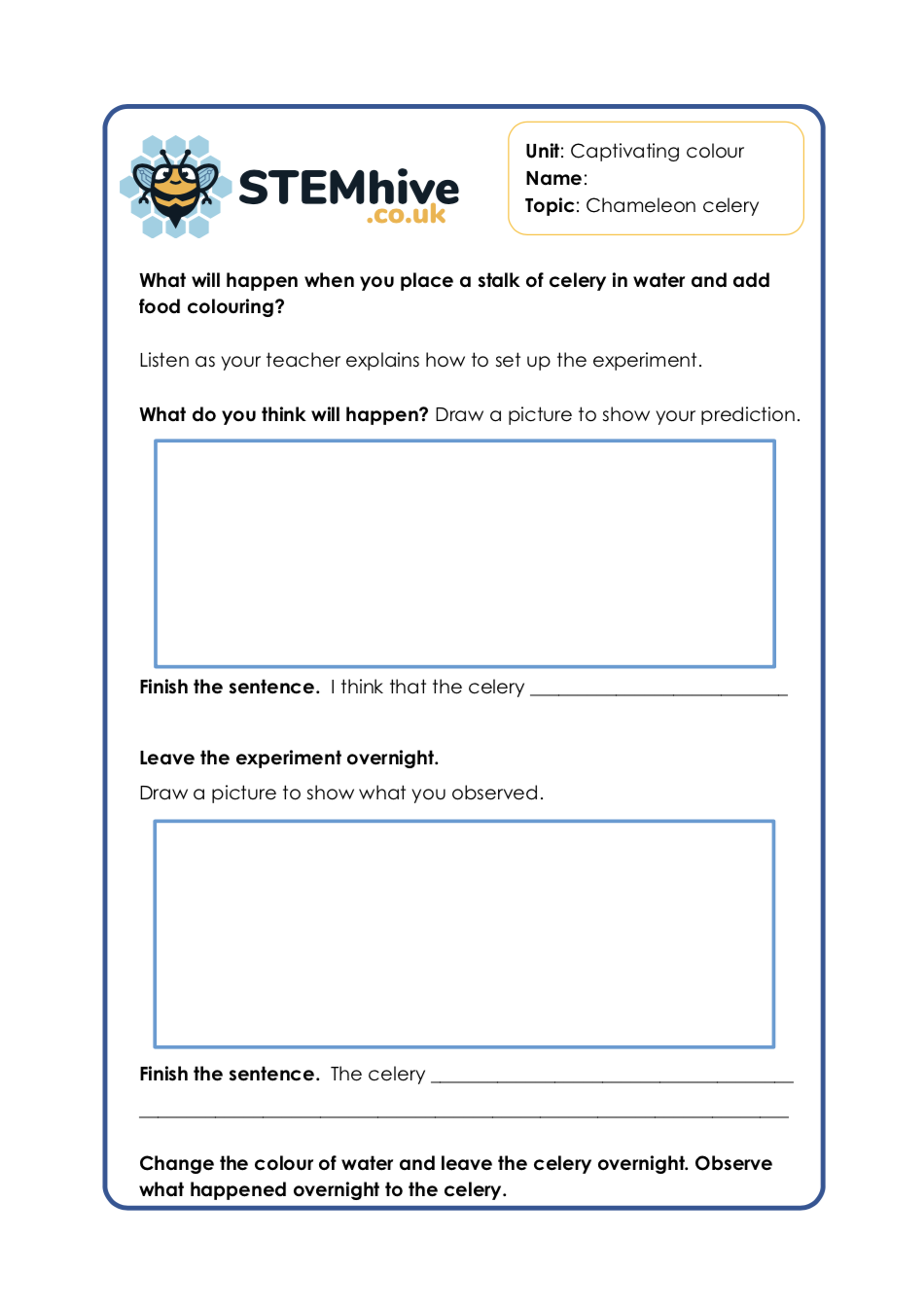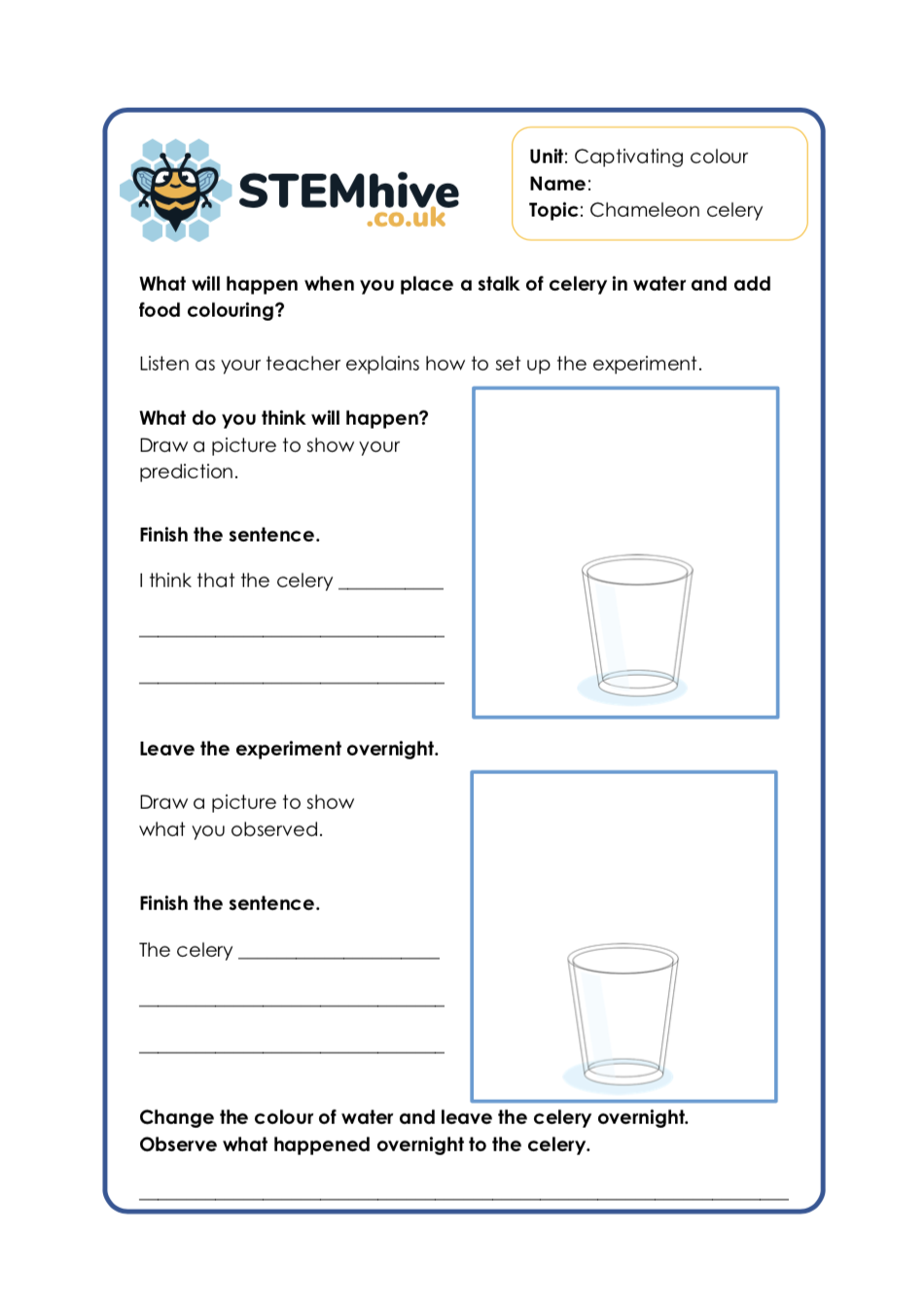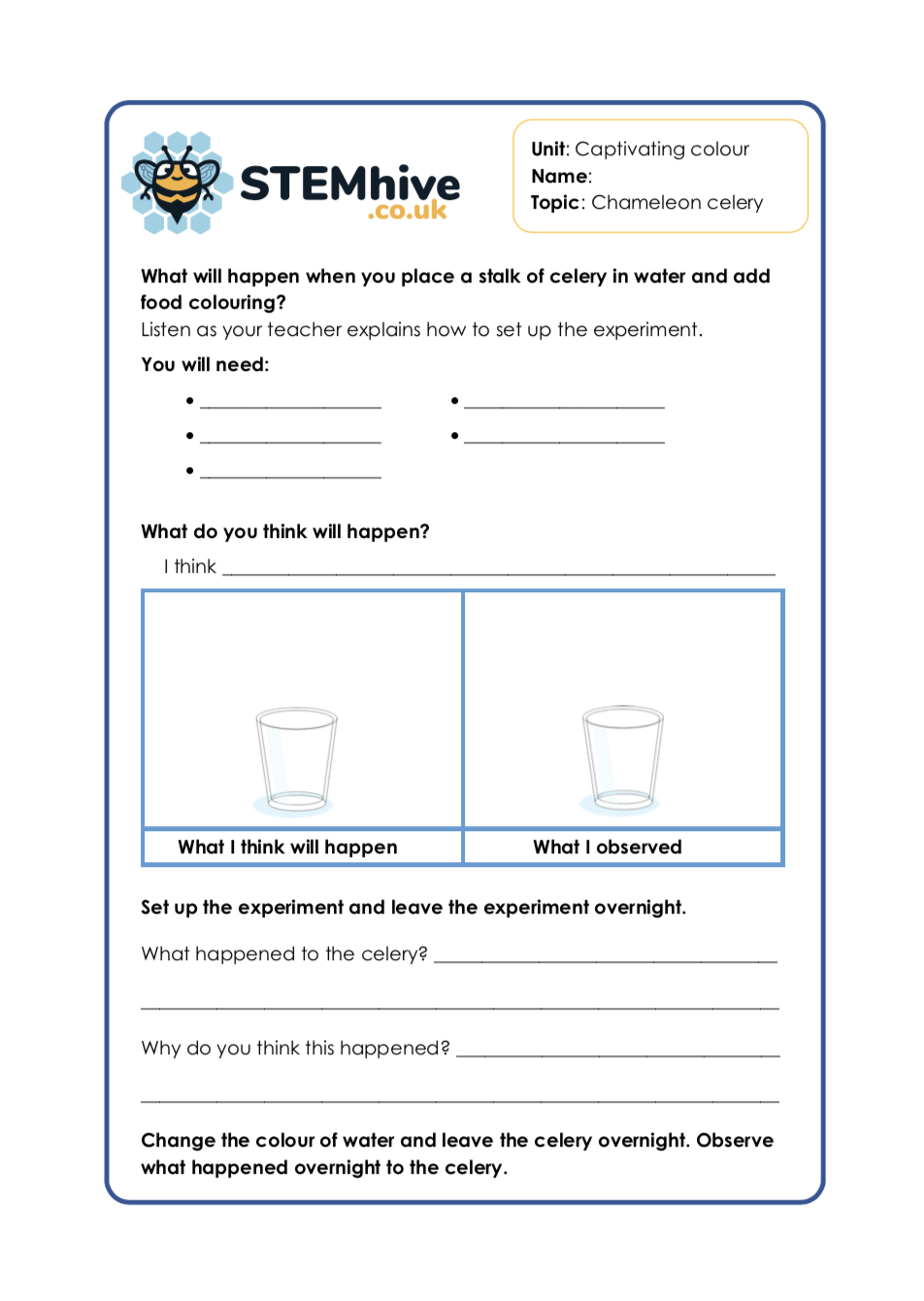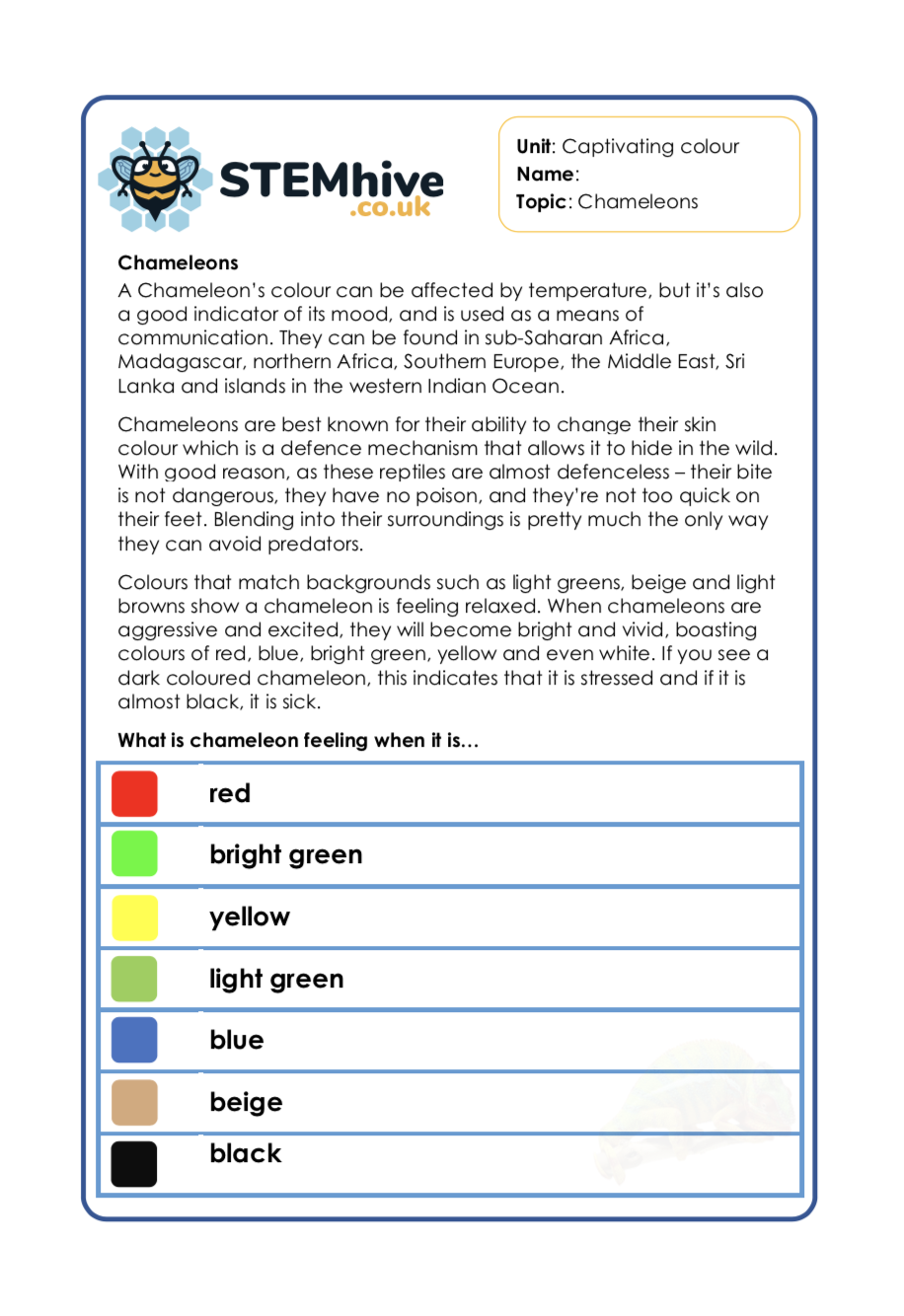Captivating Colour
Intro Short Film: Alike
This is a really interesting short film about how the people within a city have fallen into a gloomy life. Everyone in the city are ‘alike’ and a father and his son are trying to add some colour into their lives and stand out from the crowd
Discussion Points:
-Being Yourself – don’t follow the crowd.
-The Beauty of Colour – we are surrounded by so much beauty and colour. Discuss with your class if they have ever seen something that was a beautiful colour – either natural or man-made.
Science – Why do we see colour?
When light shines on an object some colors bounce off the object and others are absorbed by it. Our eyes only see the colors that are bounced off or reflected.
Unlock ResourceMain Focus: KWL Grid
This resource will give your class the opportunity to show what they know about colour and what they would like to know – questions they have about colour.
Unlock ResourceMain Focus: Chromatographic art
In this science experiment linked to colour, your class will read how to create chromatographic art, follow and sequence instructions, record findings and have a lovely piece of STEM artwork at the end.
Chromatographic art
The colours that we paint or draw with are composed of mixed colour pigments. In this simple experiment, students investigate what happens when you separate these pigments through a process known as chromatography.
Activity: Your class will use paper coffee filters and water to separate the various pigments in felt tips to see how each colour was made. You can use the filter papers to make beautiful flowers or butterflies.
Unlock ResourceMain Focus: Walking Water Experiment
Experiment – walking water
This is a fun experiment for your Year 2 / Year 3/ Year 4 class that shows what happens when you mix colours. Interestingly, it also answers the question ‘Can water travel upwards?’ The experiment works because of capillary action much like the way in which water travels through plants from the roots to the leaves. Capillary action allows liquid to seemingly defy gravity as it moves upwards through an object.
The experiment works because the paper towel is made from absorbent fibers that pull the water upwards.
Unlock ResourceMain Focus: Walking Water Templates
This resource includes templates for mixing colours for the walking water experiment.
Unlock ResourceMain Focus: Magic Milk Colour Experiment
Magic Milk – The Science
This experiment looks like magic, but it’s science! Your class will observe how colour travels through milk and there is an opportunity to discuss how mixing colours creates new colours. In this experiment, the colours are held in place by the fat content in the milk. The higher the fat content, the slower the food colouring will move.
In this resource, your class can learn the science, read the instructions and complete the experiment, write explanations to questions asked, record results and be WOWED all at the same time!
Unlock ResourceMain Focus: Skittles Experiment
Skittles Experiment
This is a fun and easy colour experiment. Place some Skittles in a pattern on a plate, add some water and watch the colours dissolve and diffuse.
This first part of this activity involves your class reading the vocabulary associated with this aspect of science and complete the paragraph by adding the words.
They will then read the instructions, make predictions, answers scientific enquiry questions and show evidence of their pattern placements and results.
Unlock ResourceMain Focus: Rainbows
There is something wonderful about seeing a rainbow in the sky and watching it fade as quickly as it appeared. In this simple activity, your KS2 class will learn about how rainbows form and the order of colours in the rainbow. You can create a mnemonic or simply use the acronym ROY G BIV to remember the sequence of colours.
Scroll through the resources to
Main Focus: Light Sources - Natural and Artificial
This resource focuses on light sources. White light consists of seven colours. The sunlight splits into seven colours. They are: violet, indigo, blue, green, yellow, orange and red.
All light has a source. A source is something that produces light. Some sources are naturally occurring such as the sun or lightning. Others are artificial. Artificial light is created from electricity. Artificial light sources include torches and televisions.
Your class will complete the resources and learn key vocabulary such as natural light, artificial light, produce, source of light and be able to categorise objects.
Main Focus: Materials and Light
This STEM activity focuses on materials and whether or not they allow light to pass through.
This resource for LKS2 covers transparent, translucent and opaque and involves your class carrying out a simple experiment using a torch and objects.
Unlock ResourceMain Focus: Chameleon Celery Experiment
This colourful activity helps you to learn about the movement of water and nutrients in plants through the plant’s vascular system. These small vessels in the celery stalks carry the coloured water to the leaves.
You will need:
- Leafy celery stalks
- Clear glass containers such as mason jars, jam jars or drinking glasses
- Food colouring in a range of colours
- Water
- Scissors
Print off our resources explaining the science behind this activity and the experiment resources for your class to complete.
Main Focus: Colour and Chameleons
This is an additional resource linked to colour and chameleons.
I was always taught that chameleons change colour to blend into their surroundings, but there is much more to it.
In this resource, your KS2 class will read the passages about chameleons and then write a simple explanation at the bottom as to why a chameleon would change the colour.
This resource is a useful resource to acquire more real world colour knowledge.
Unlock Resource
